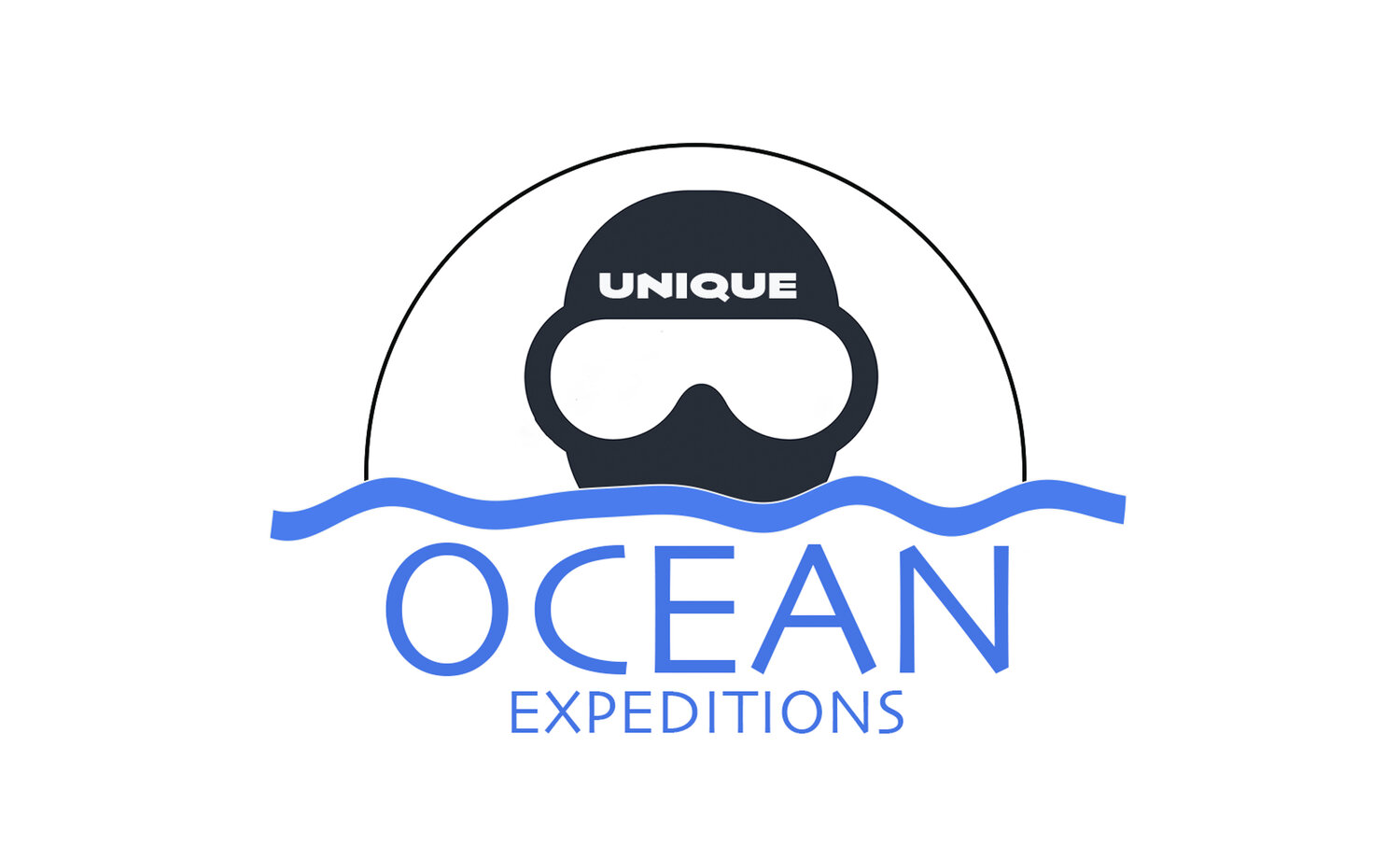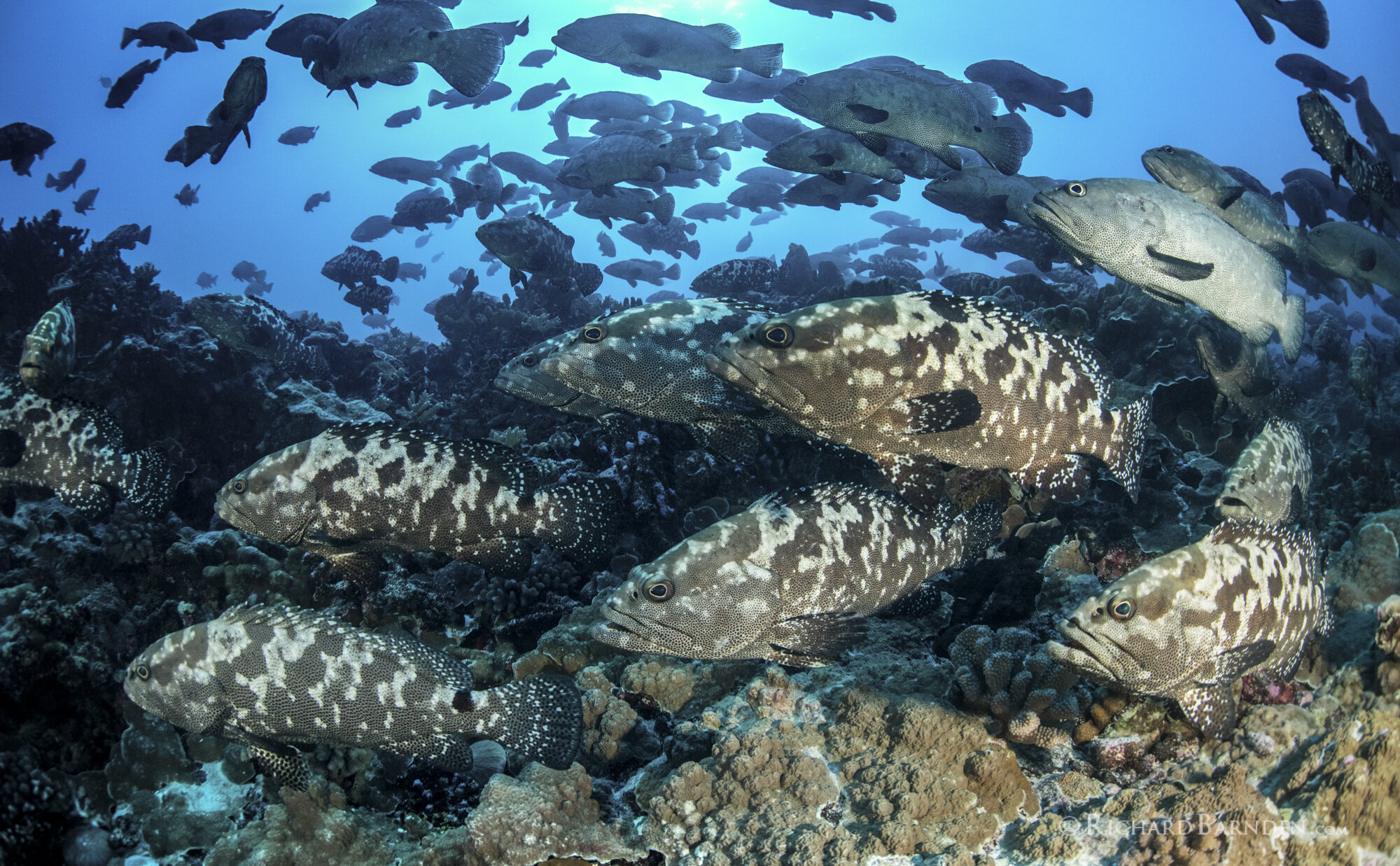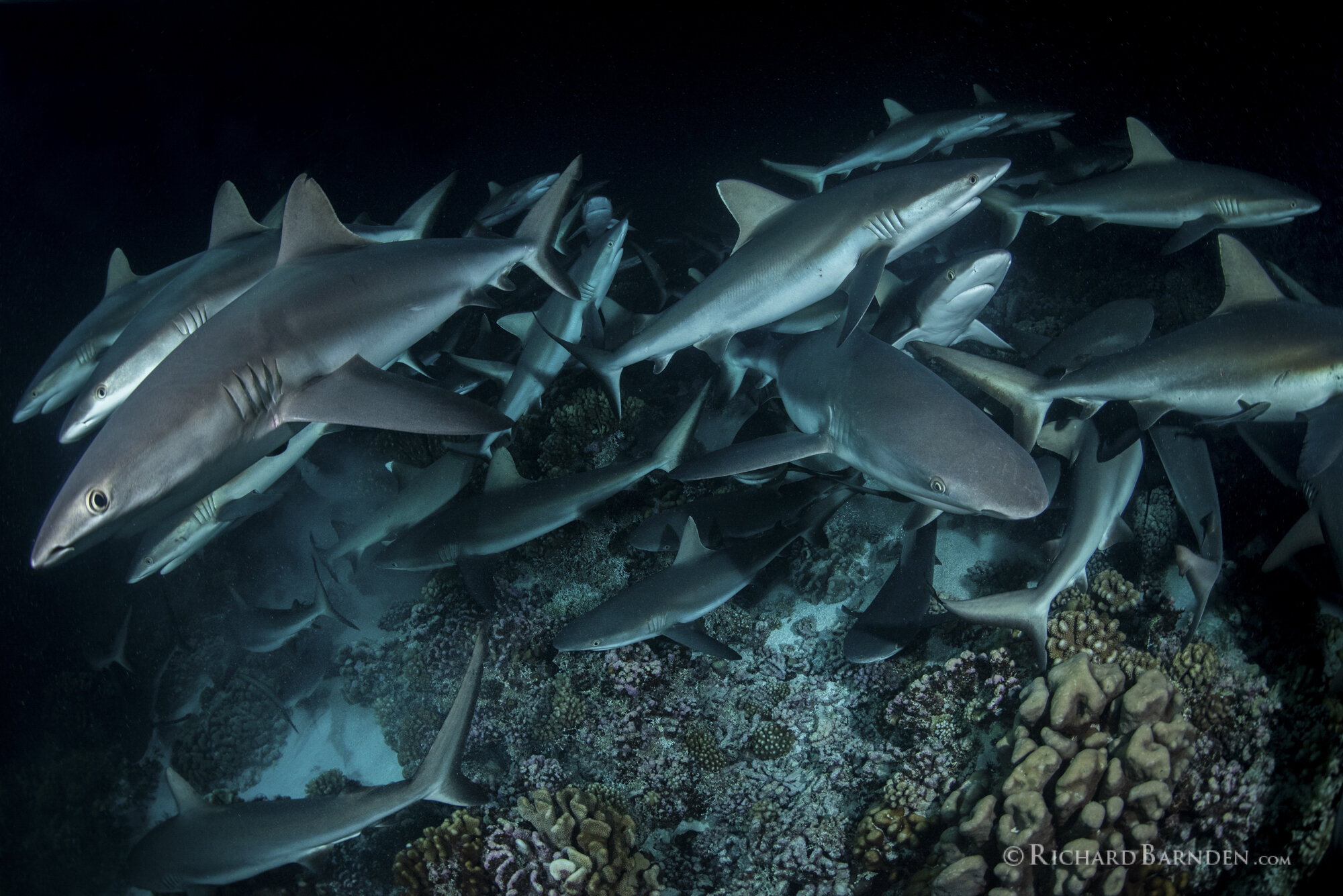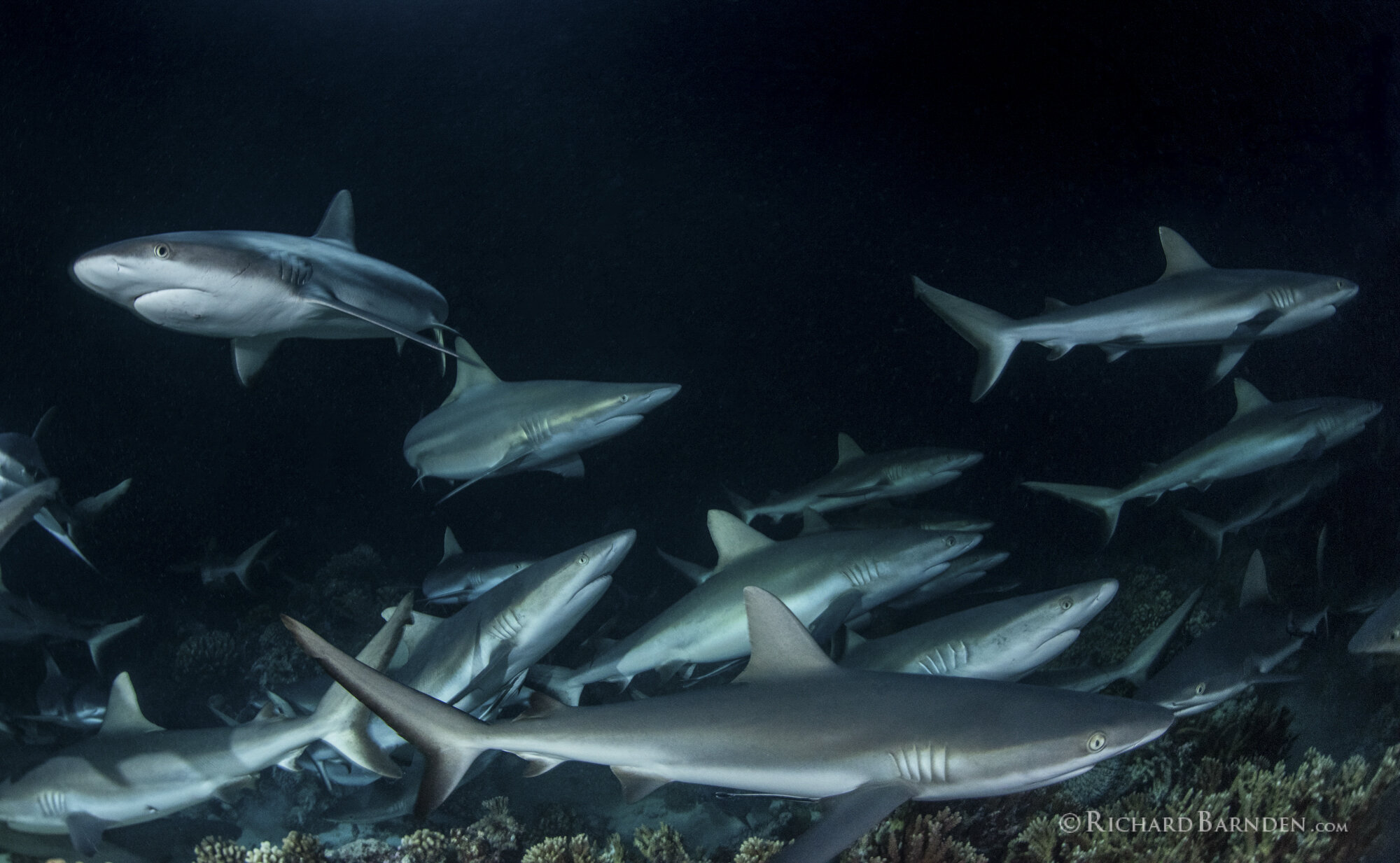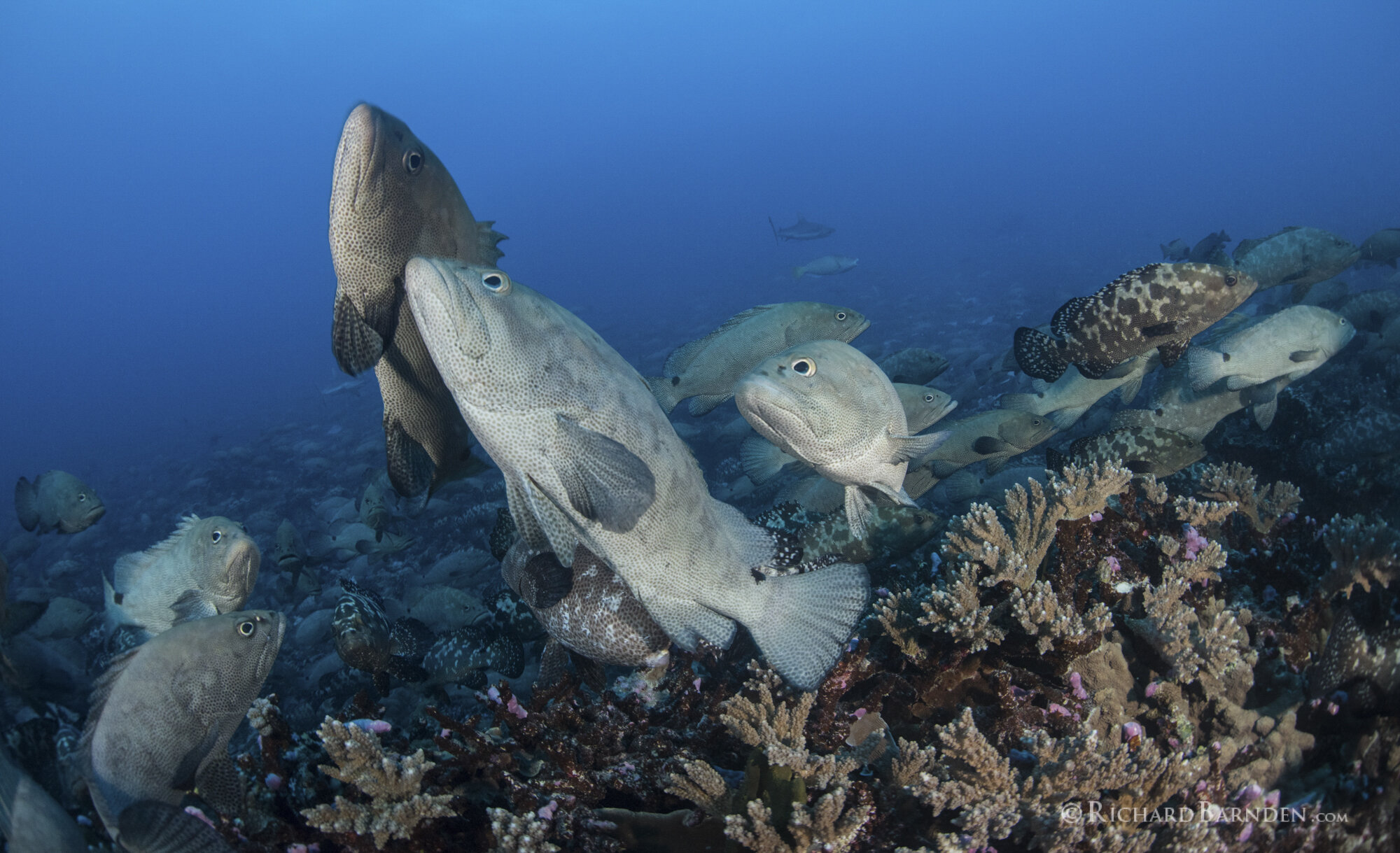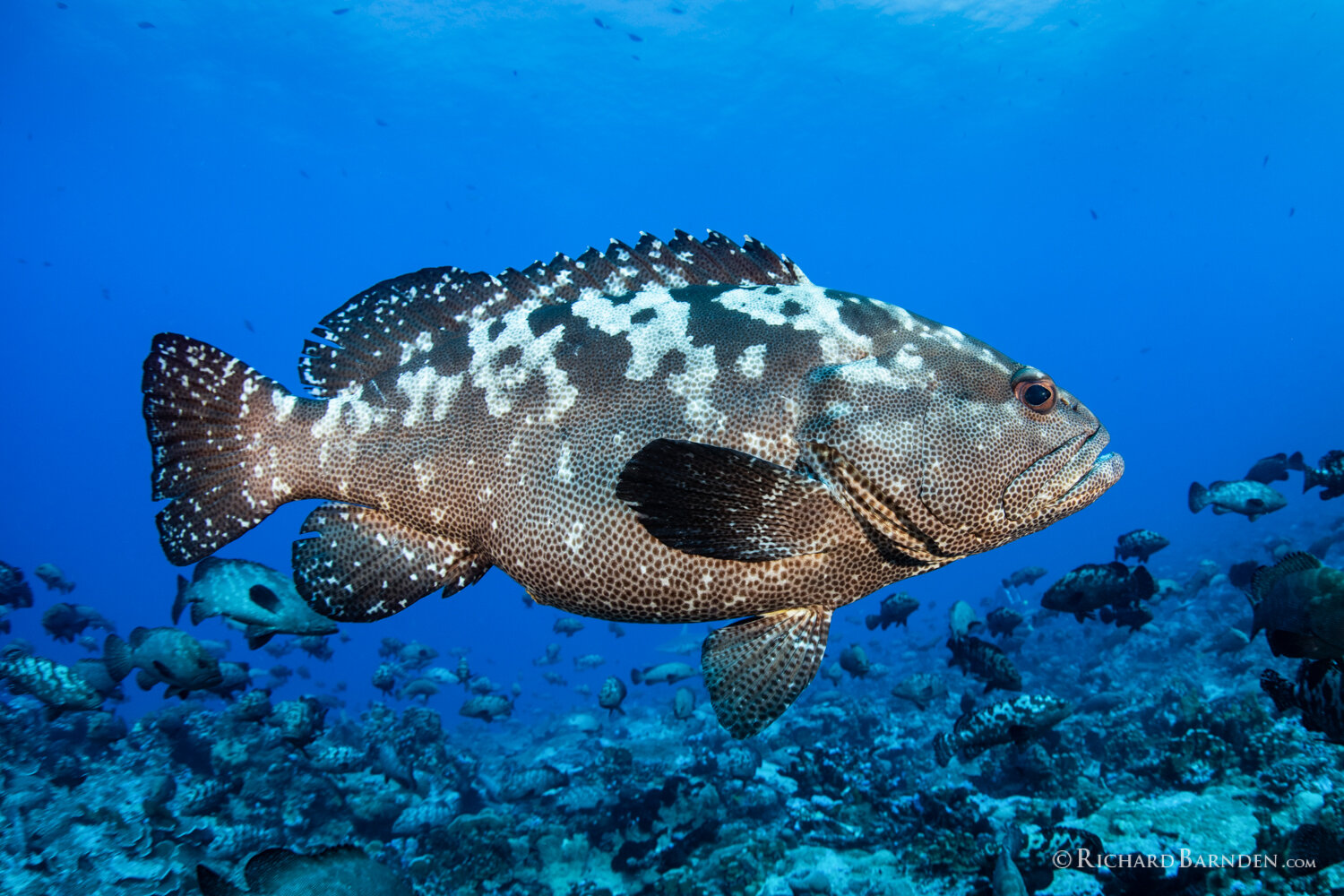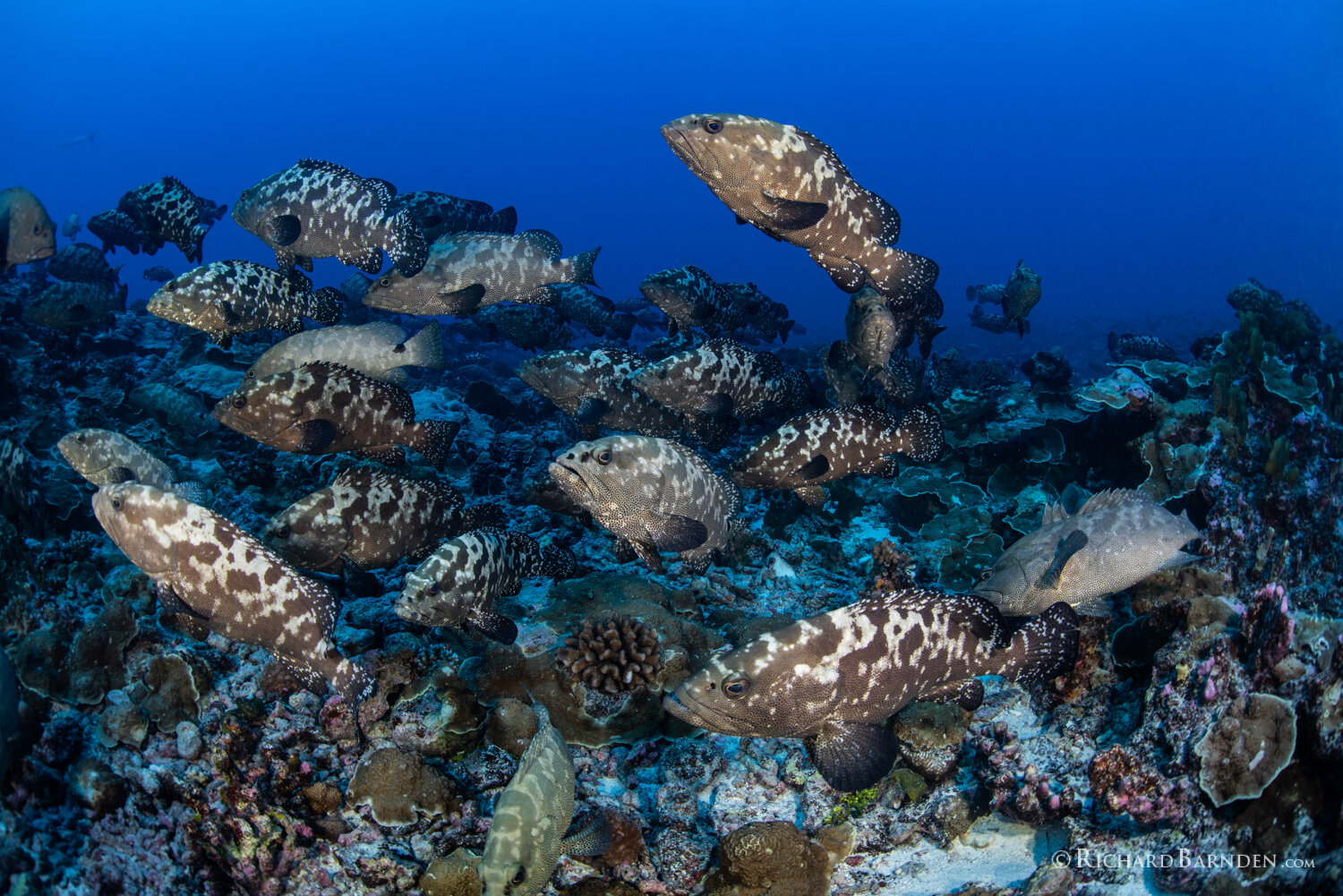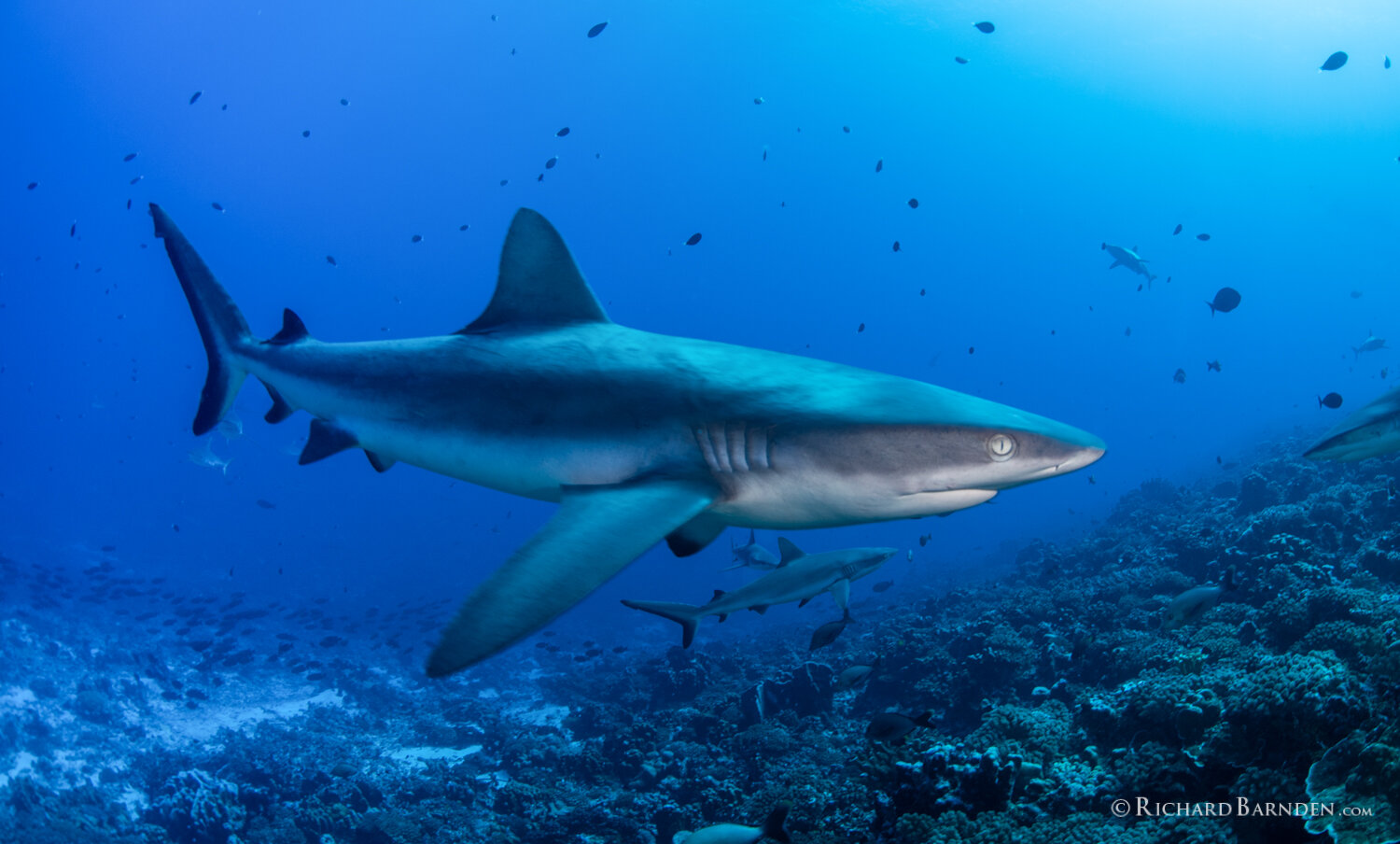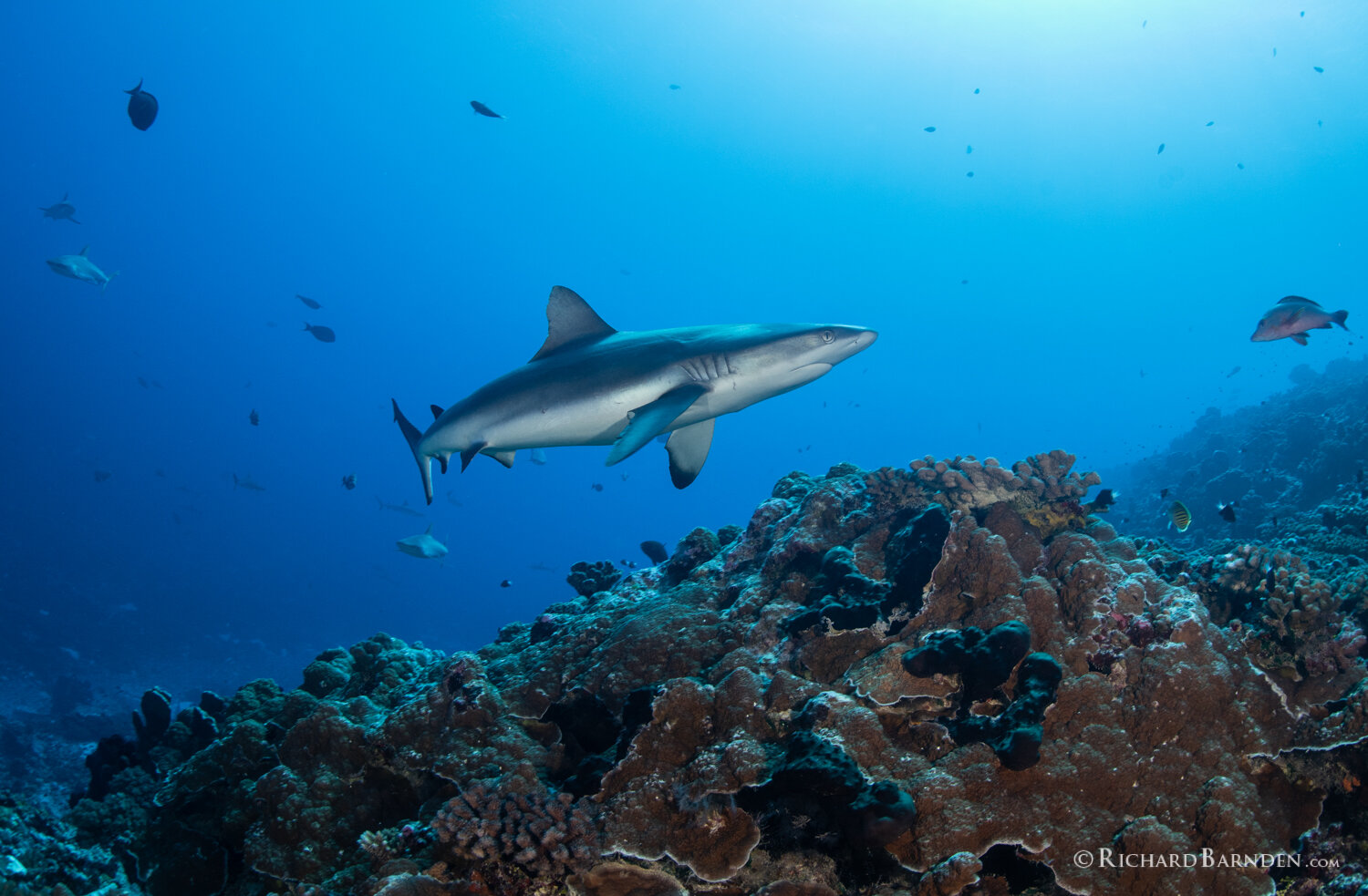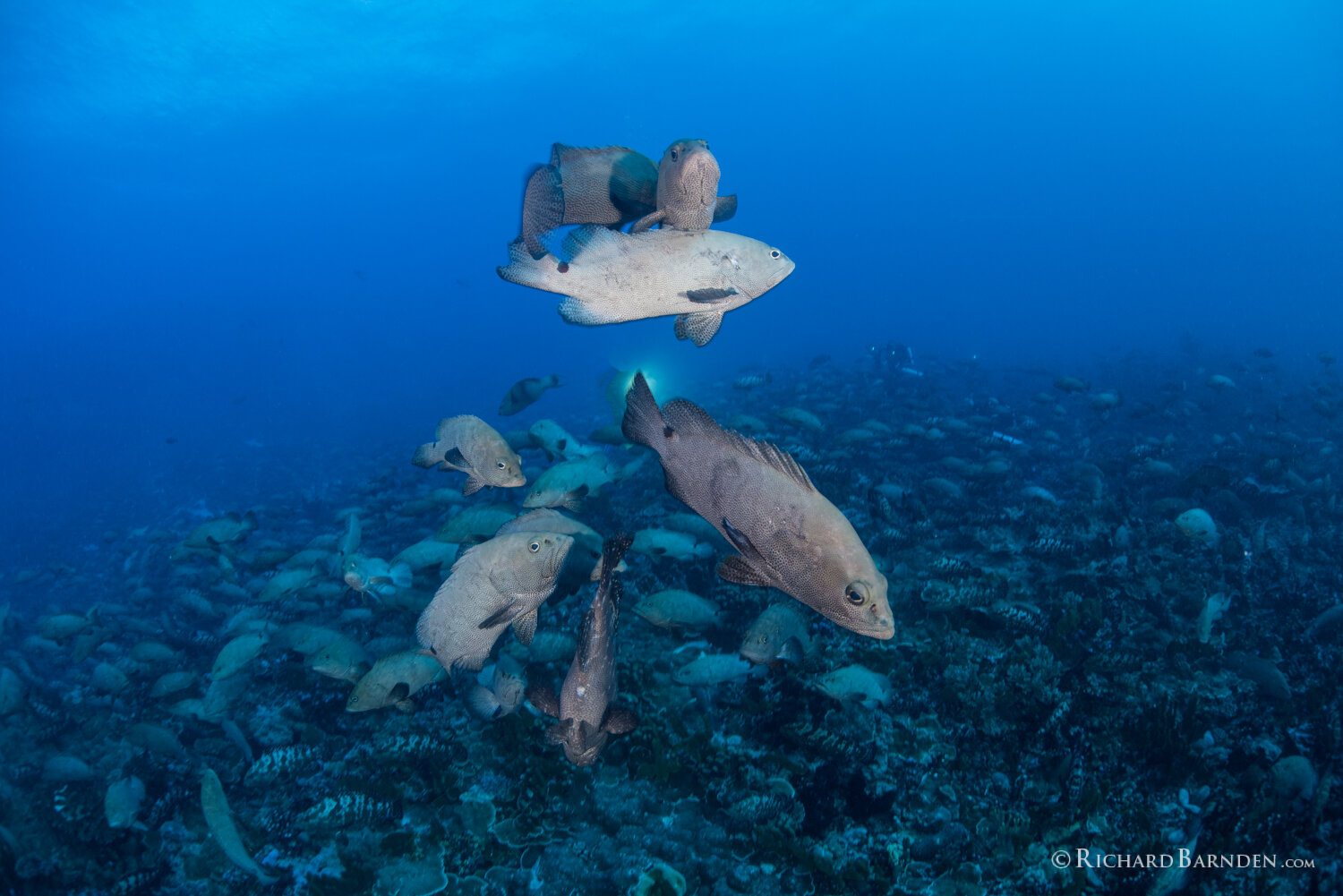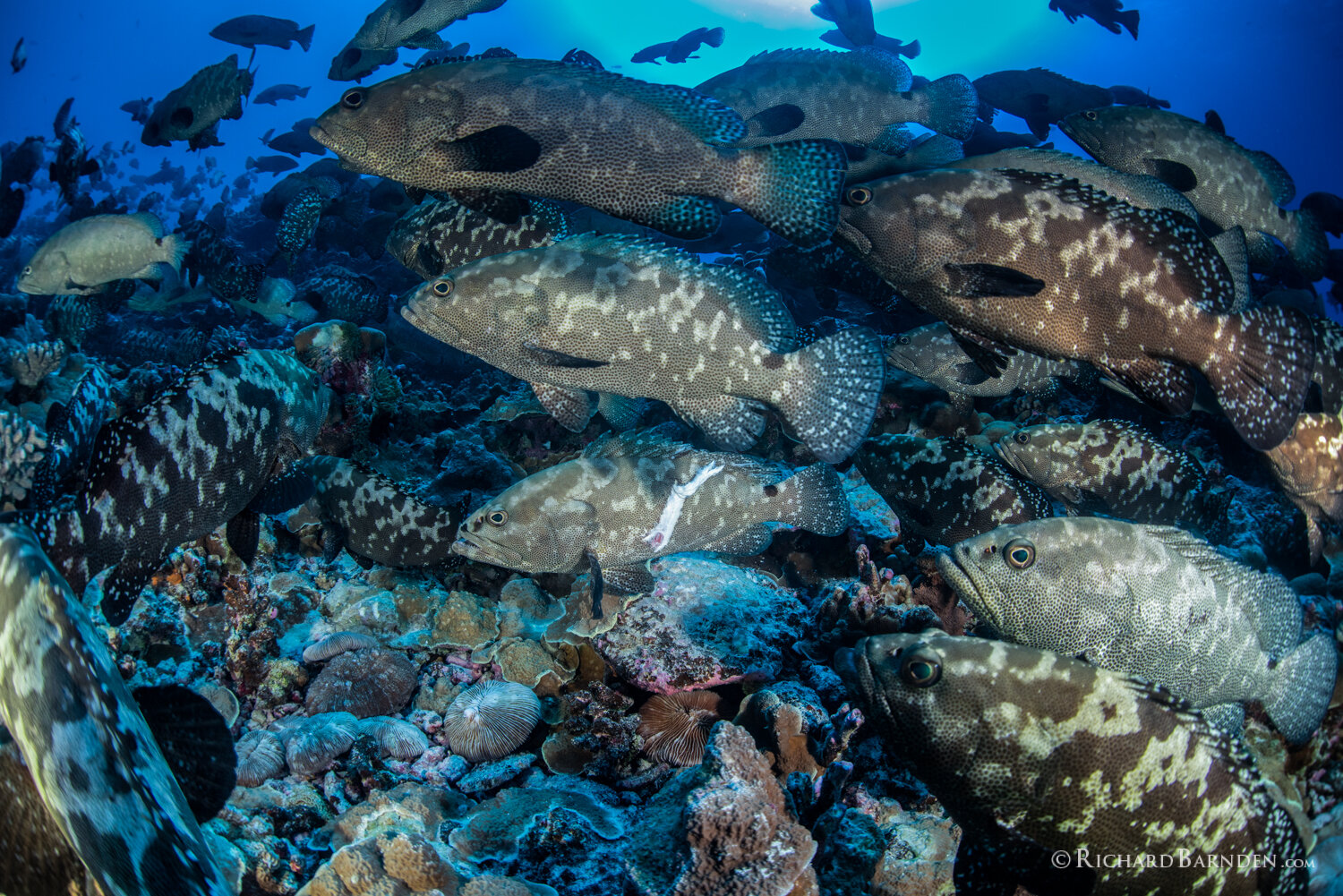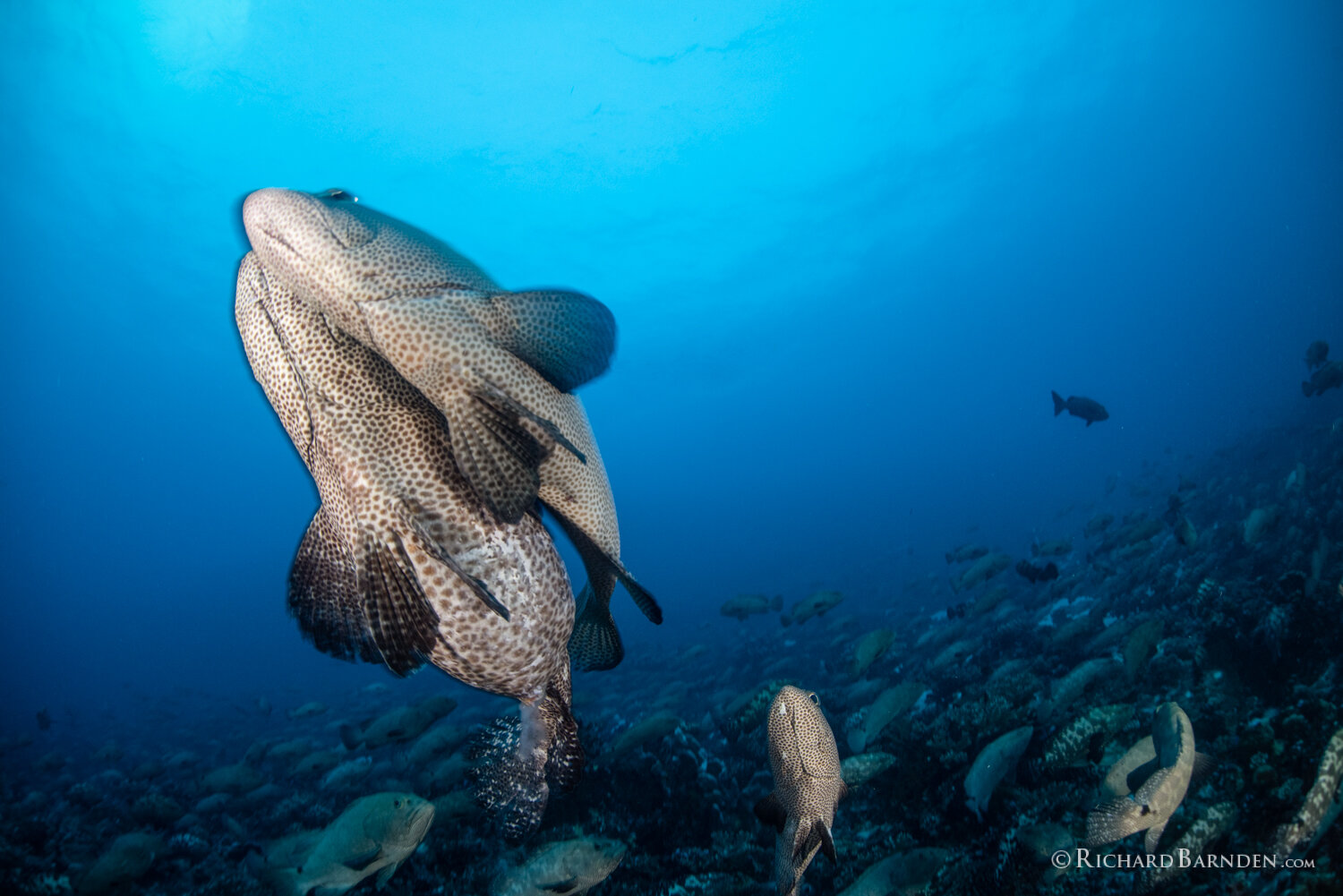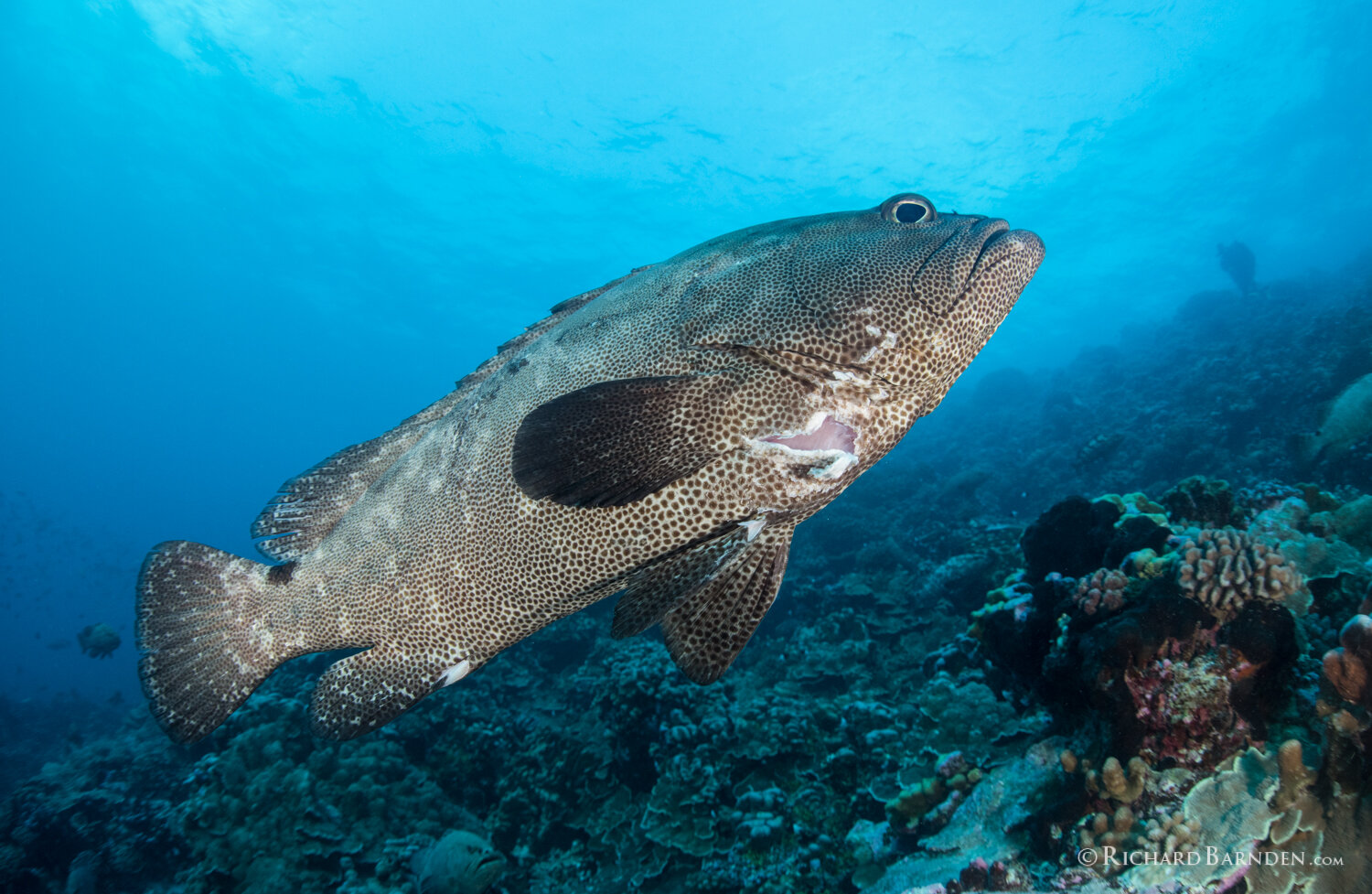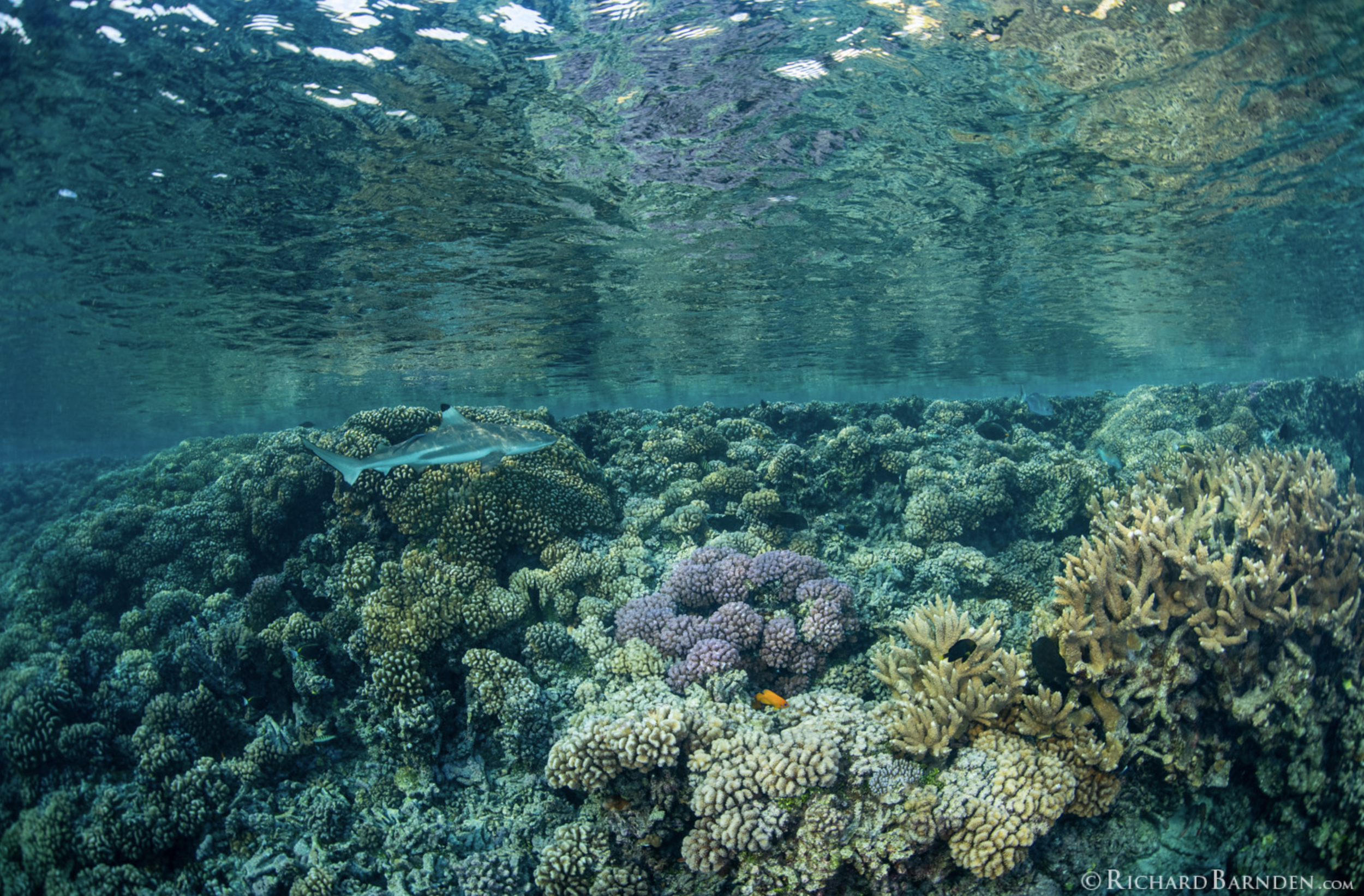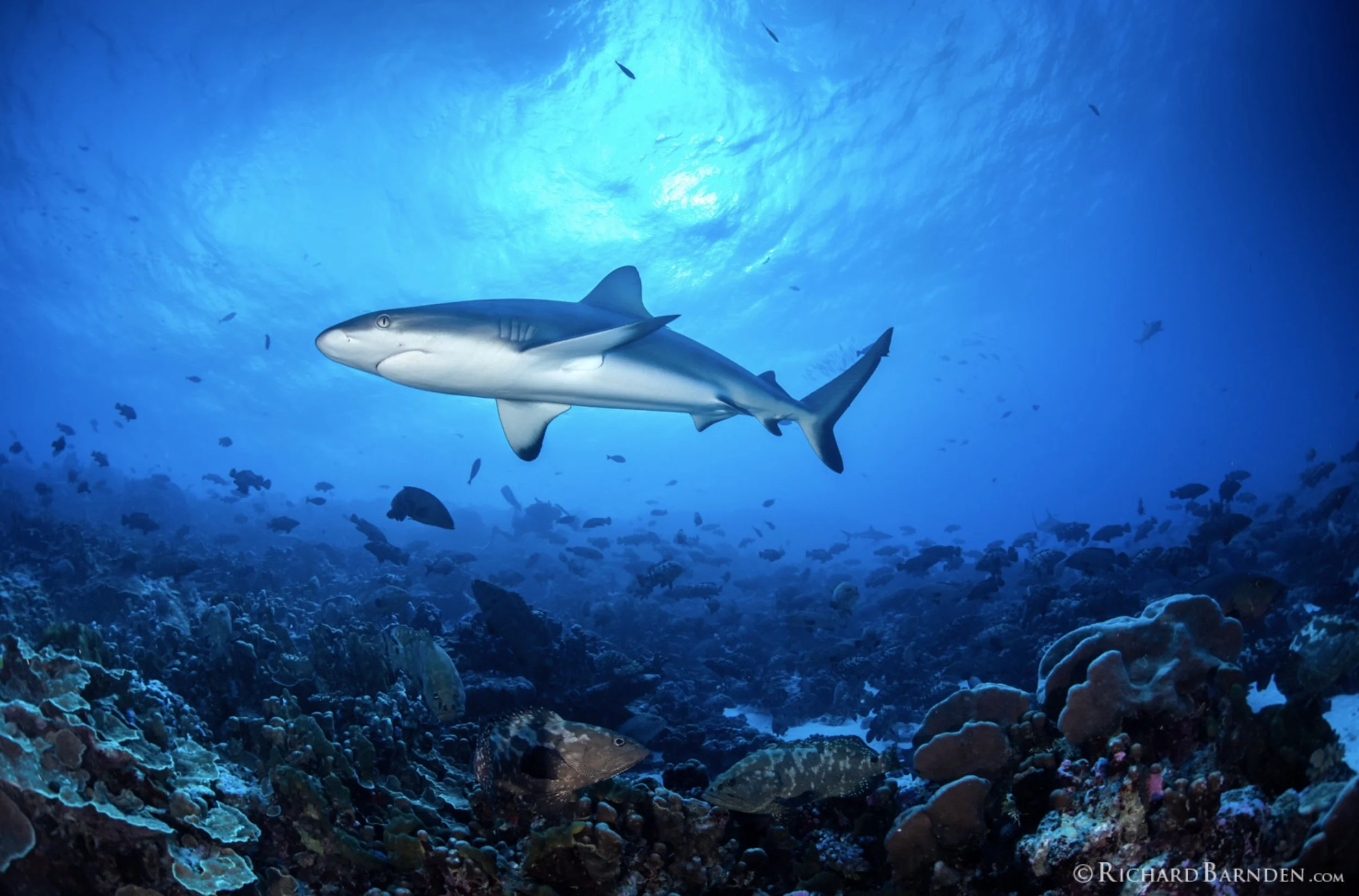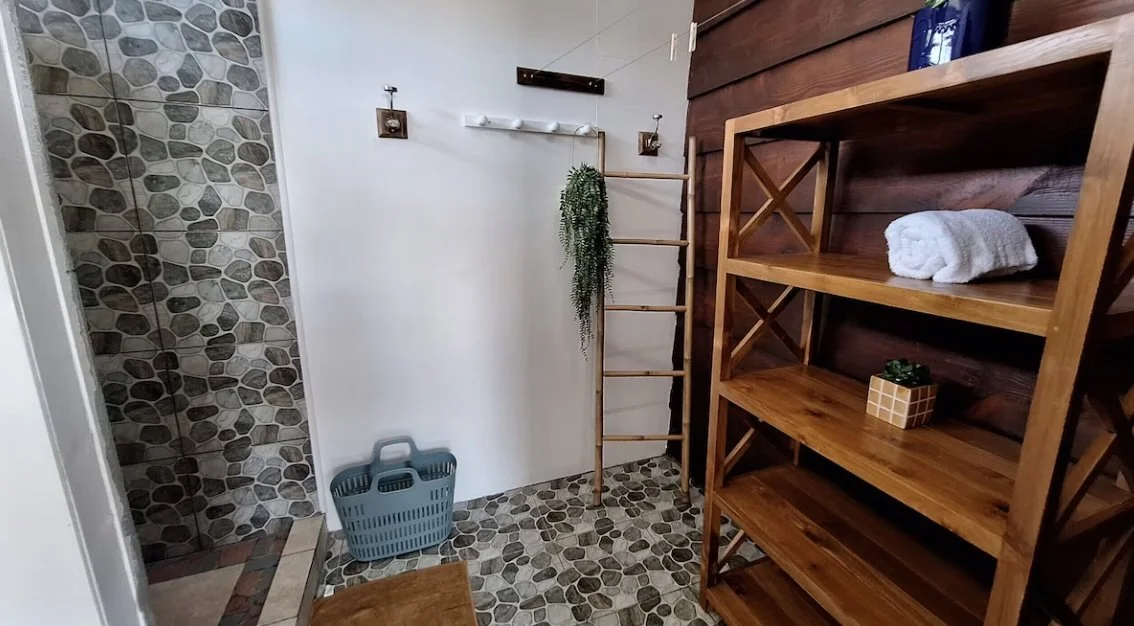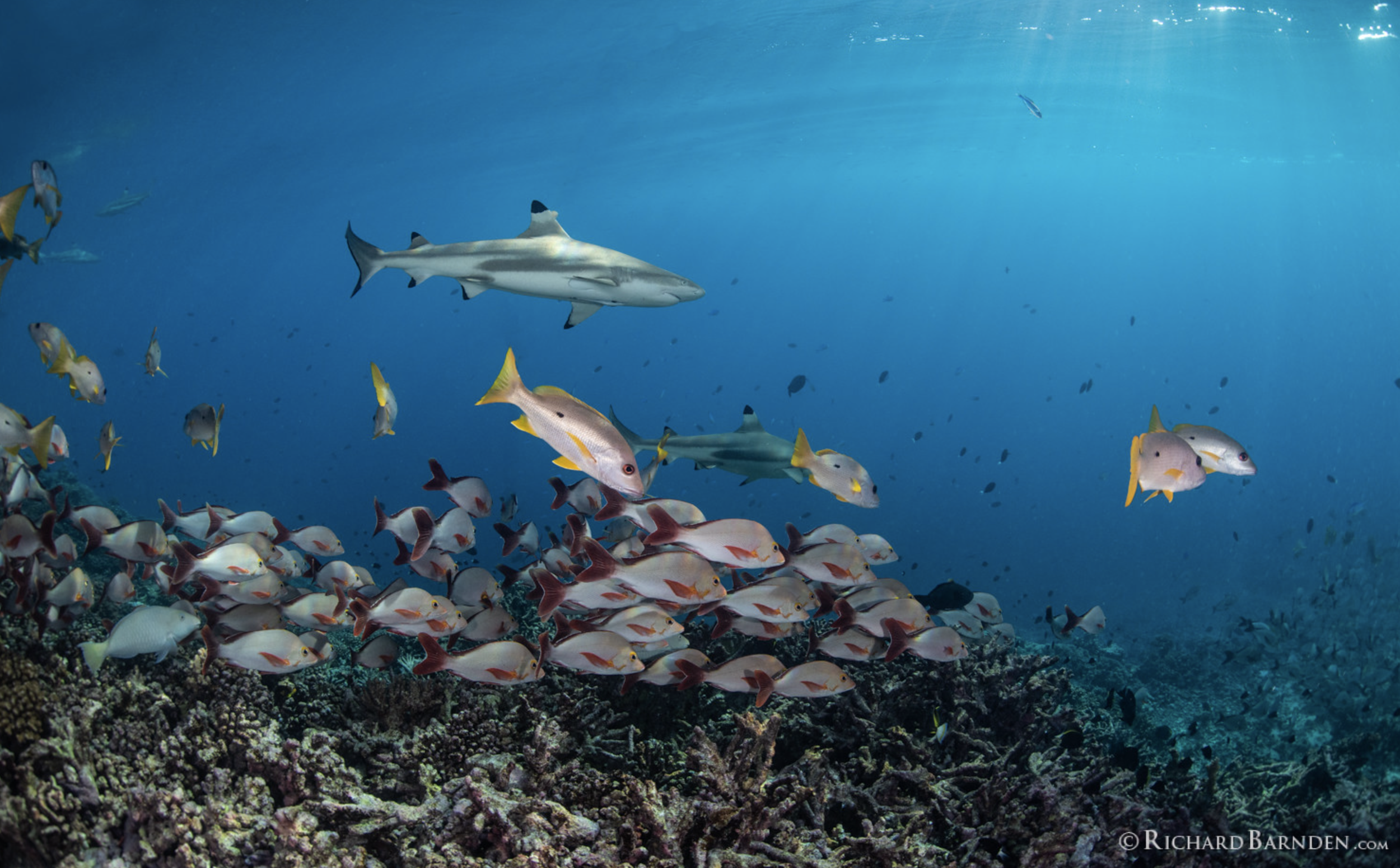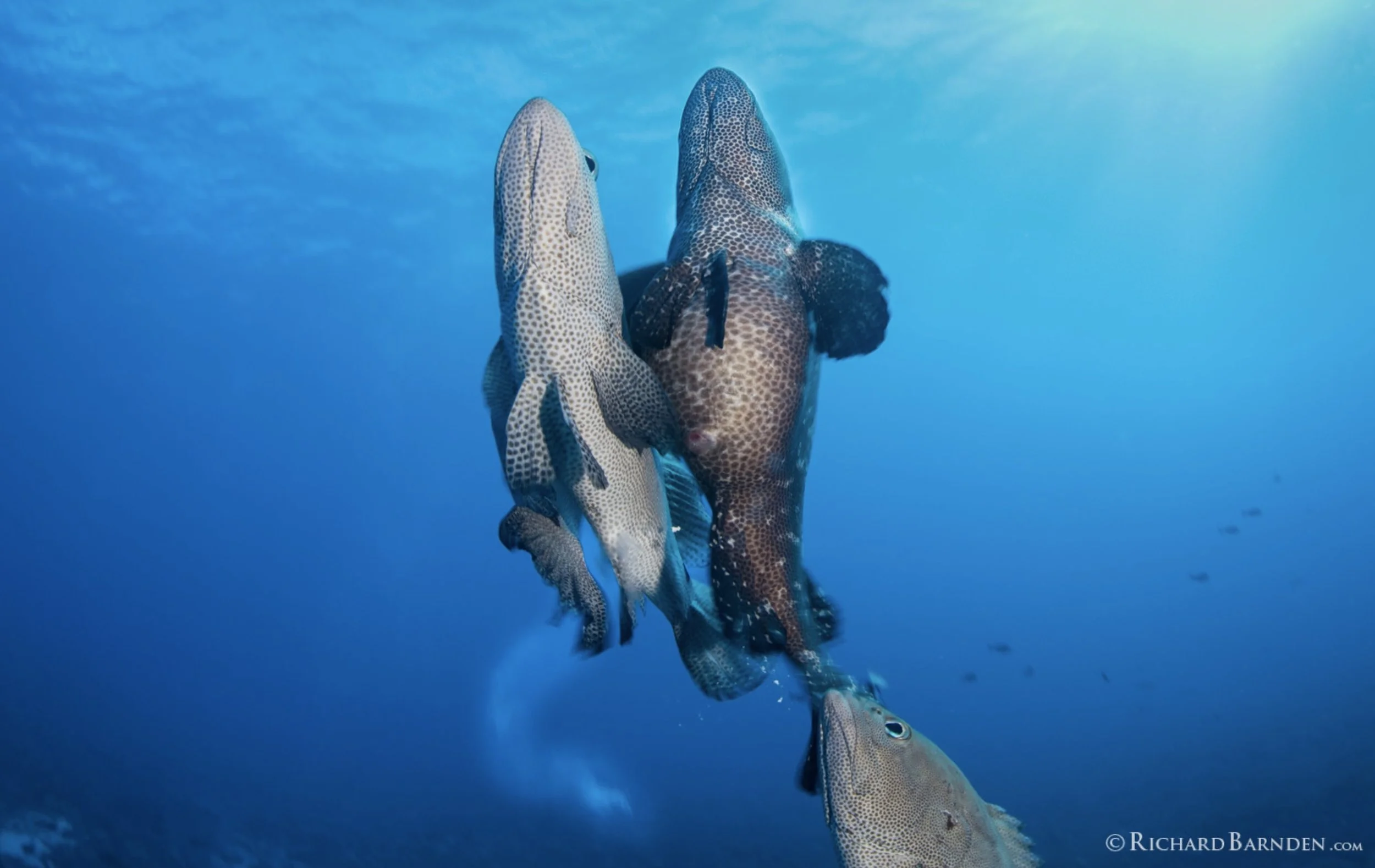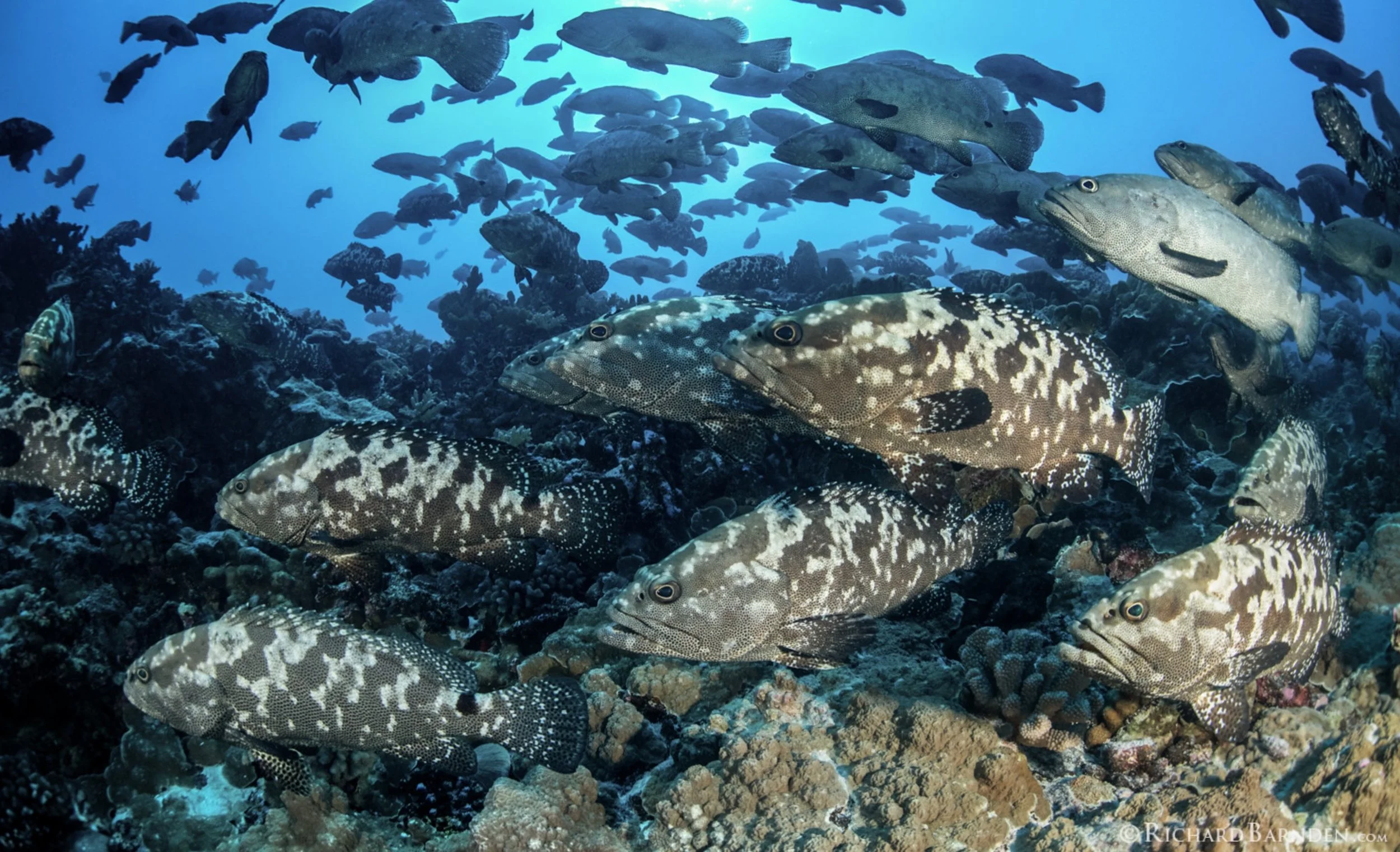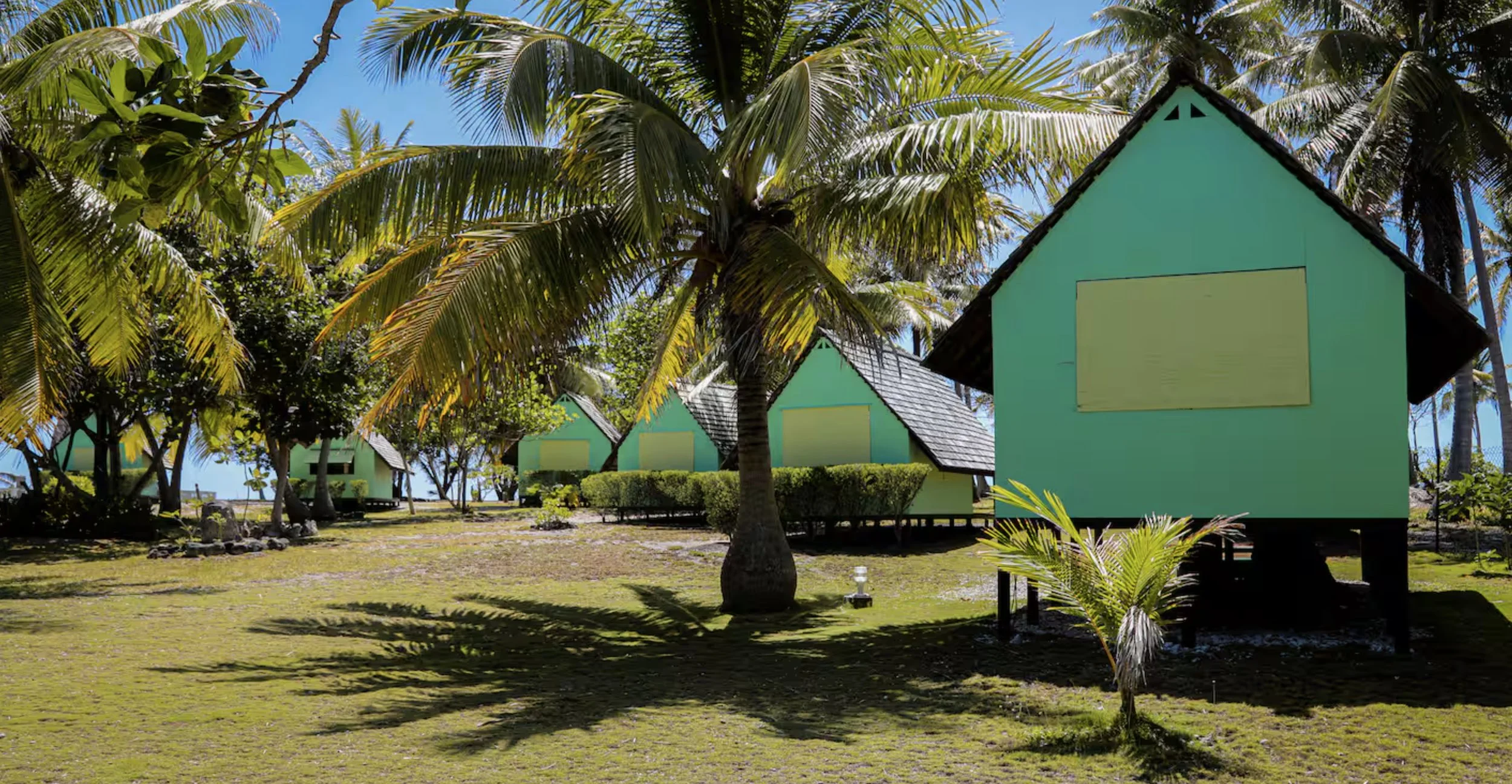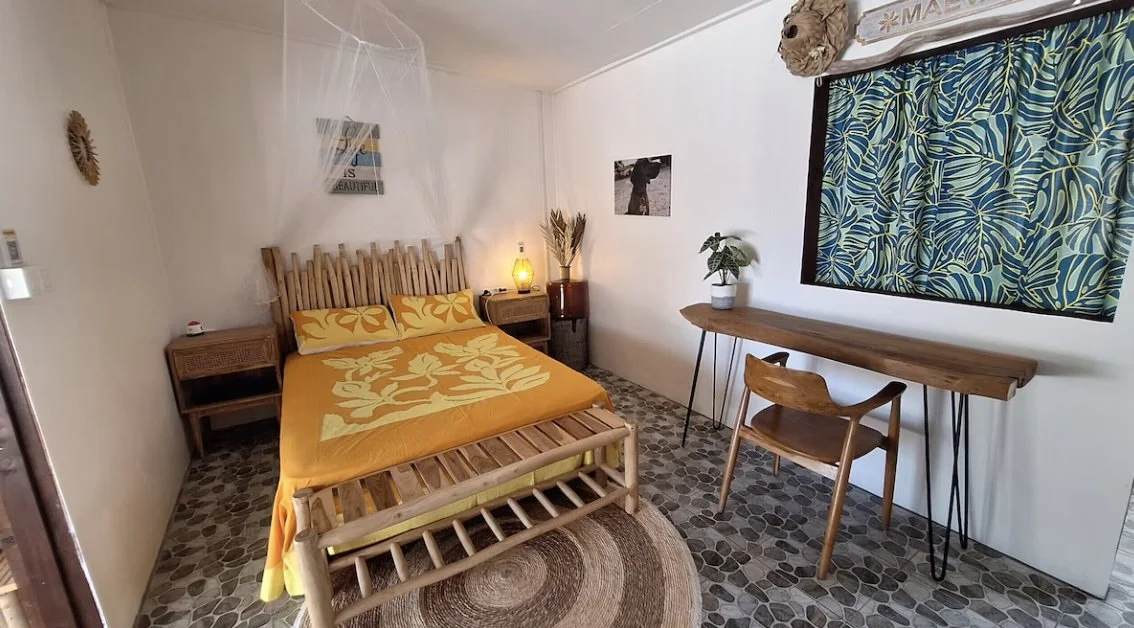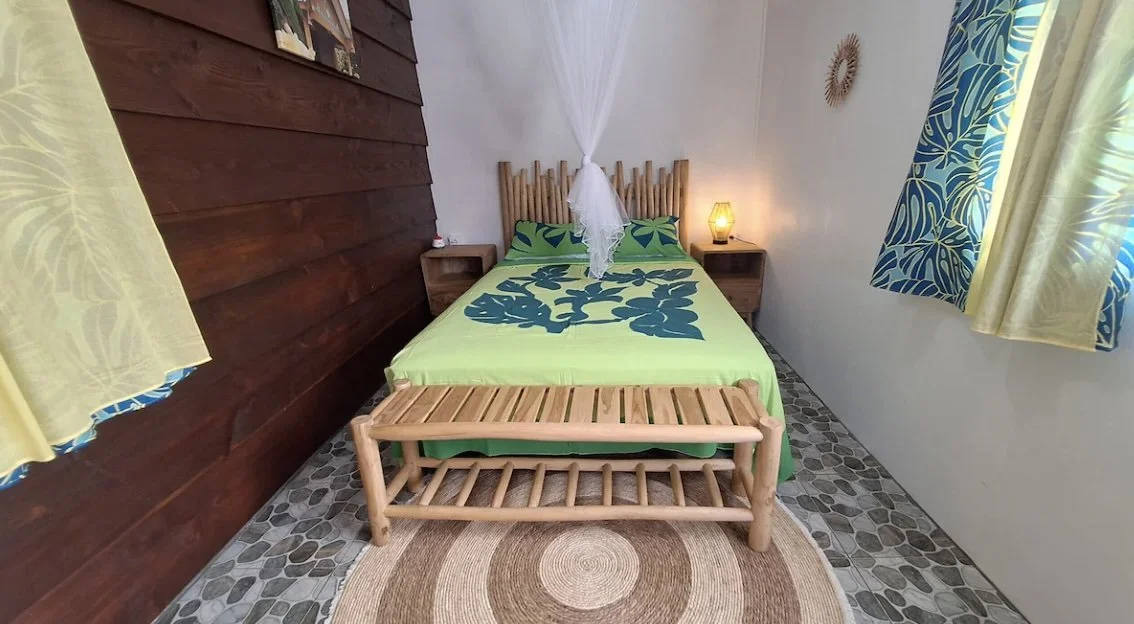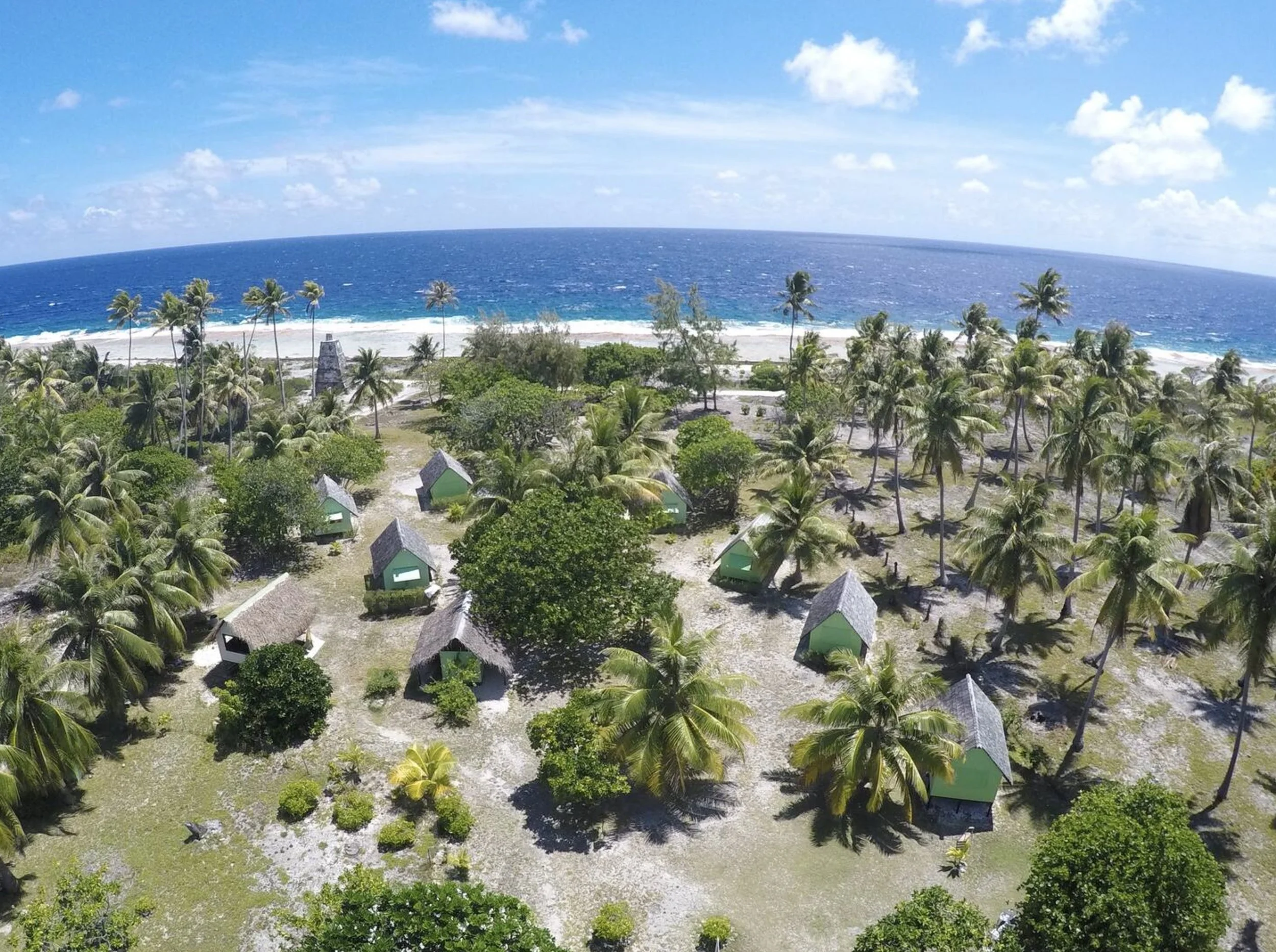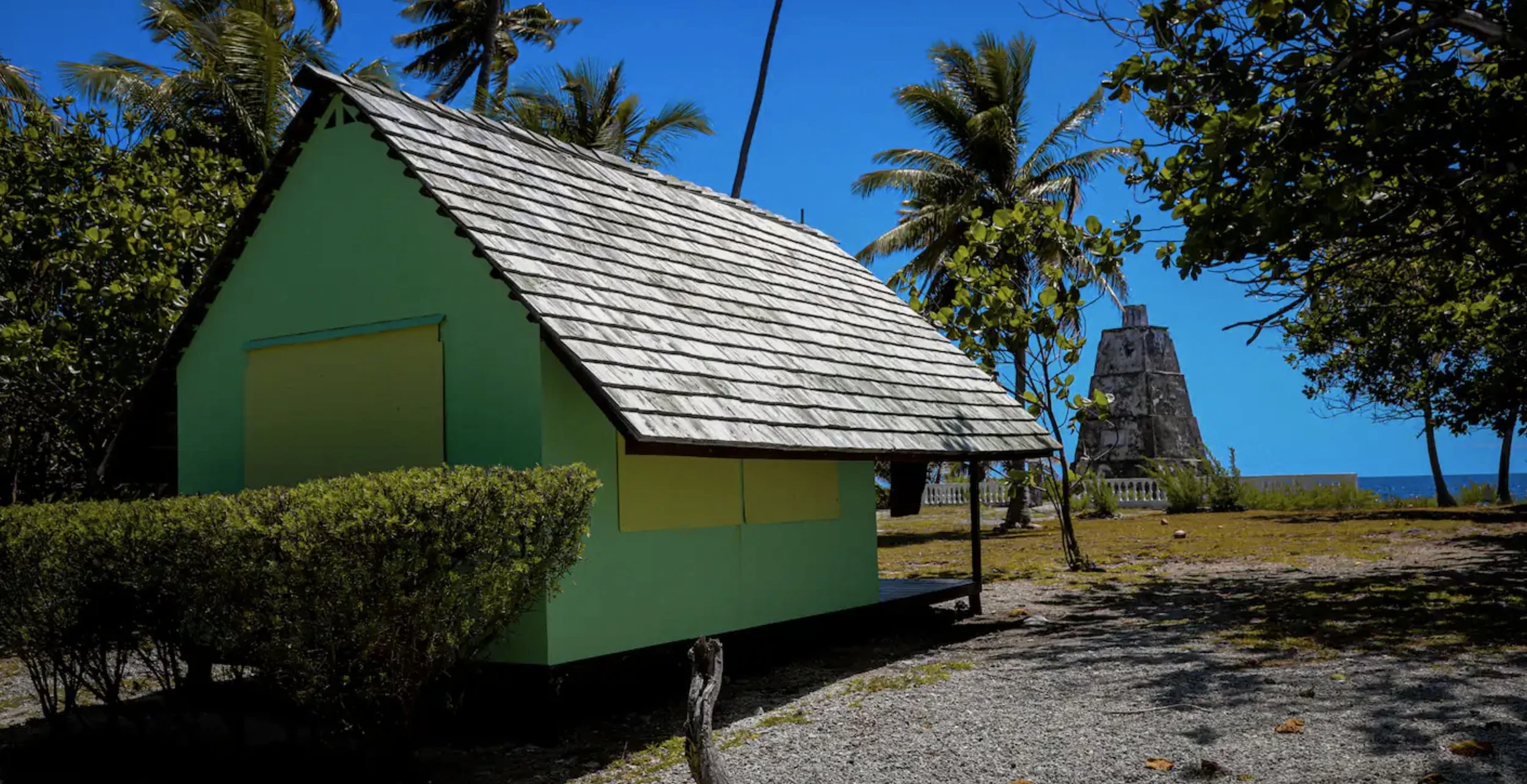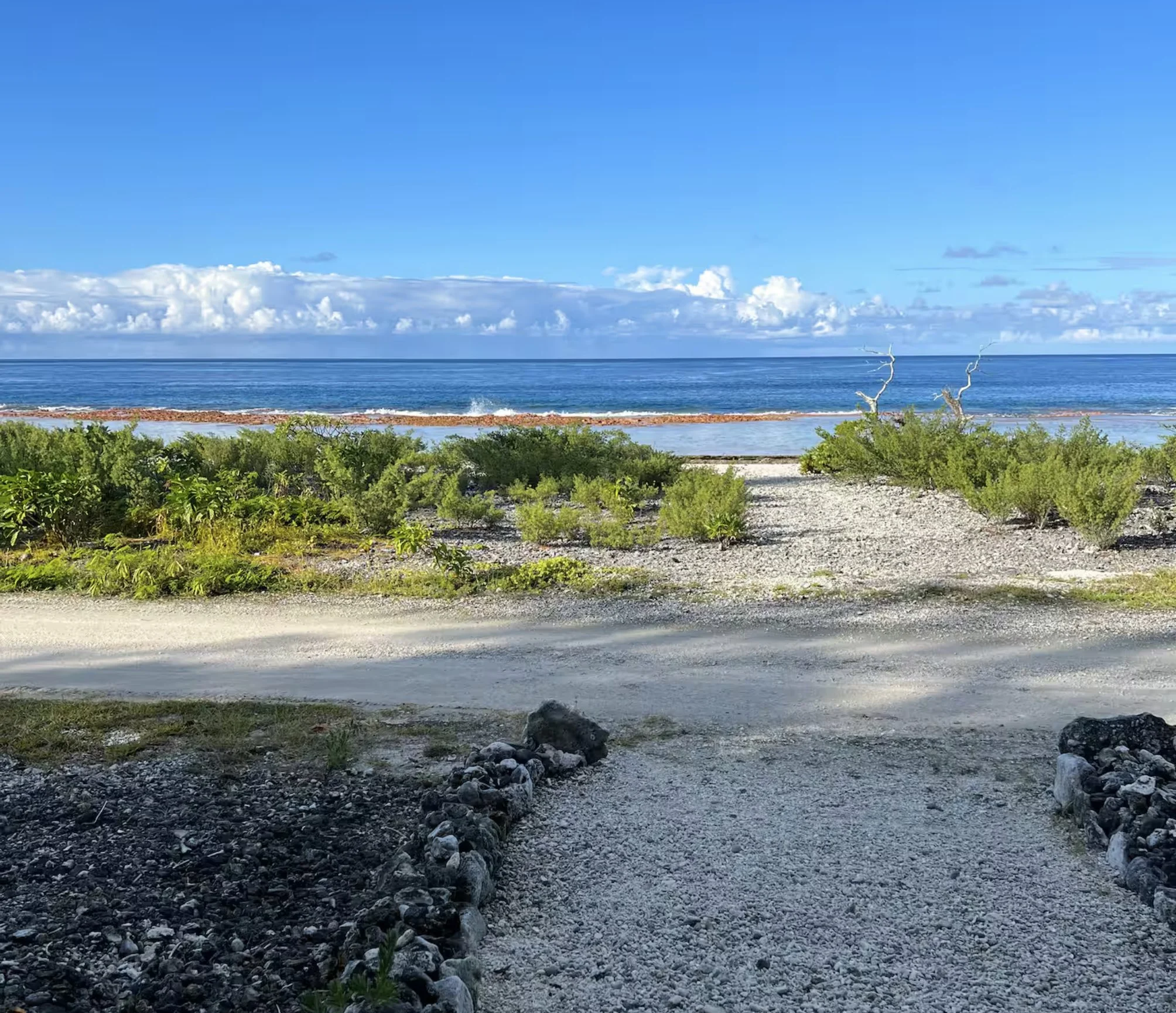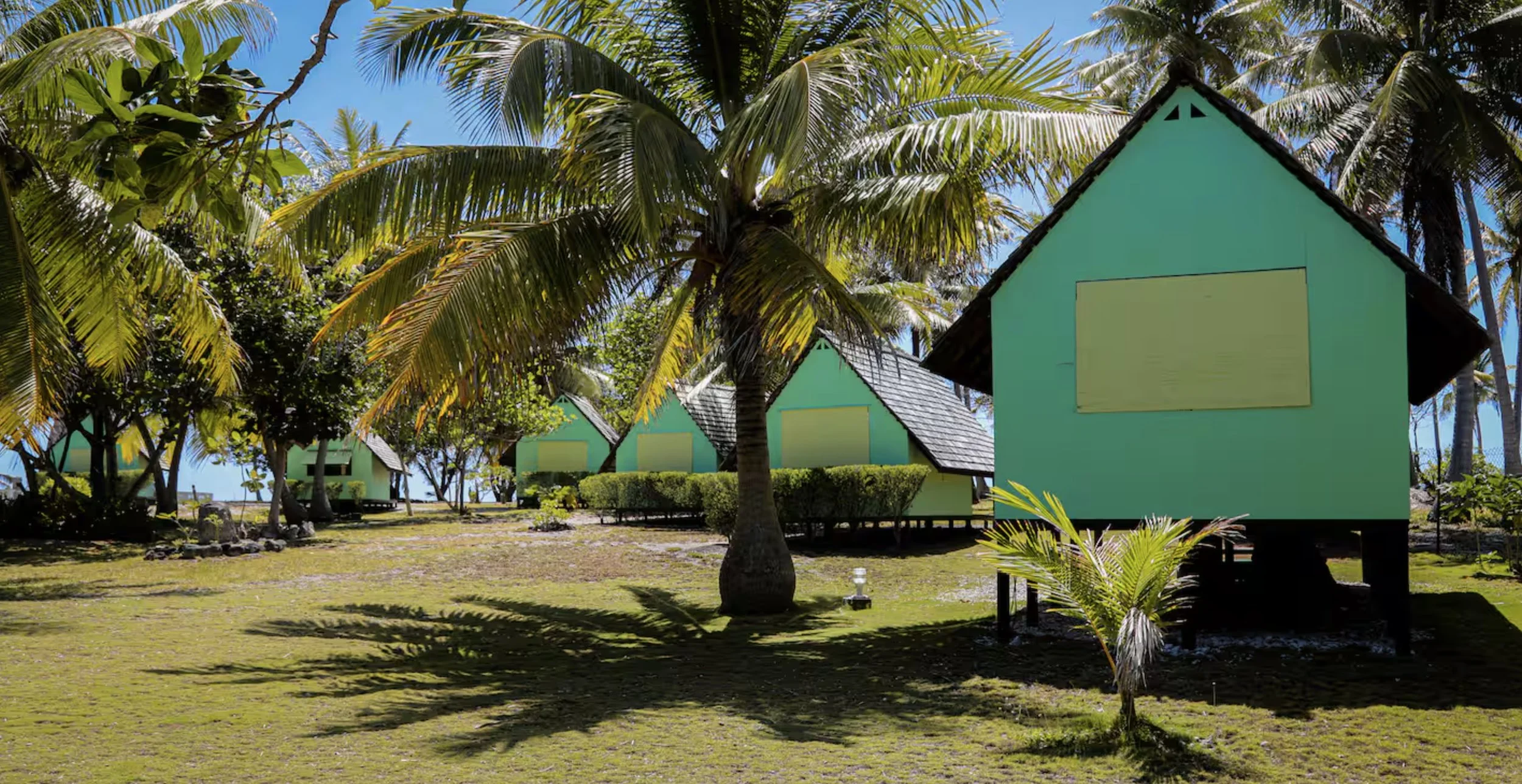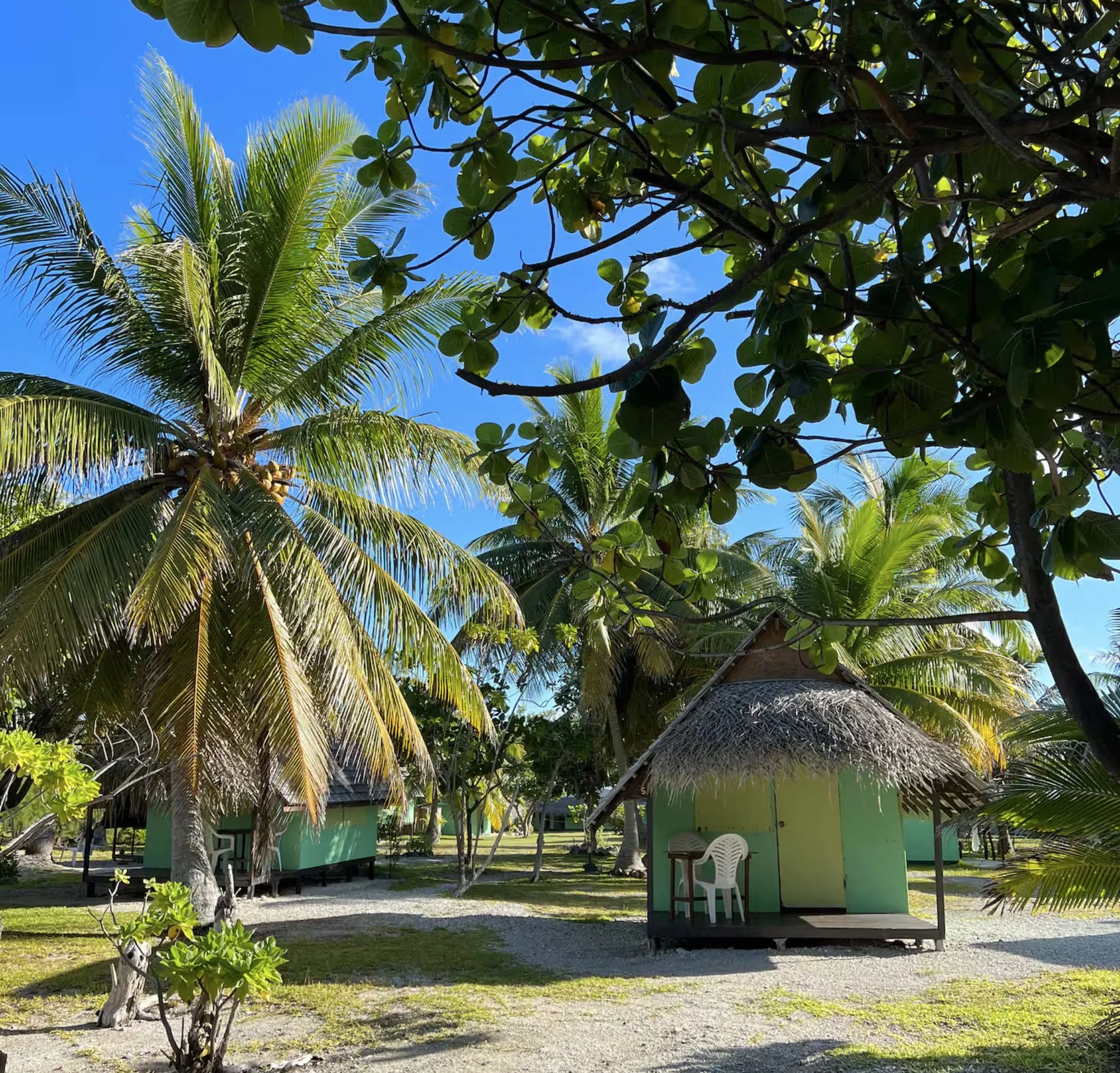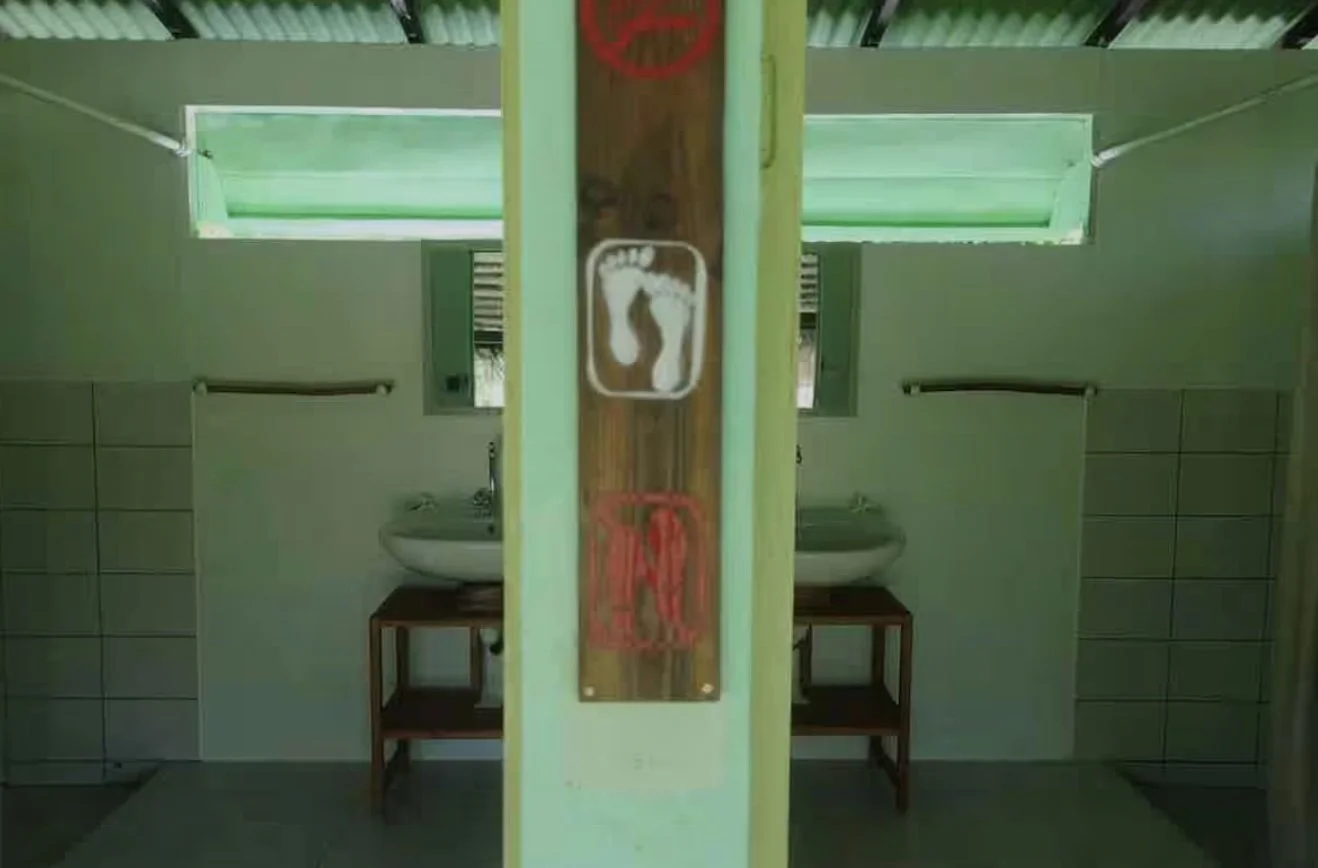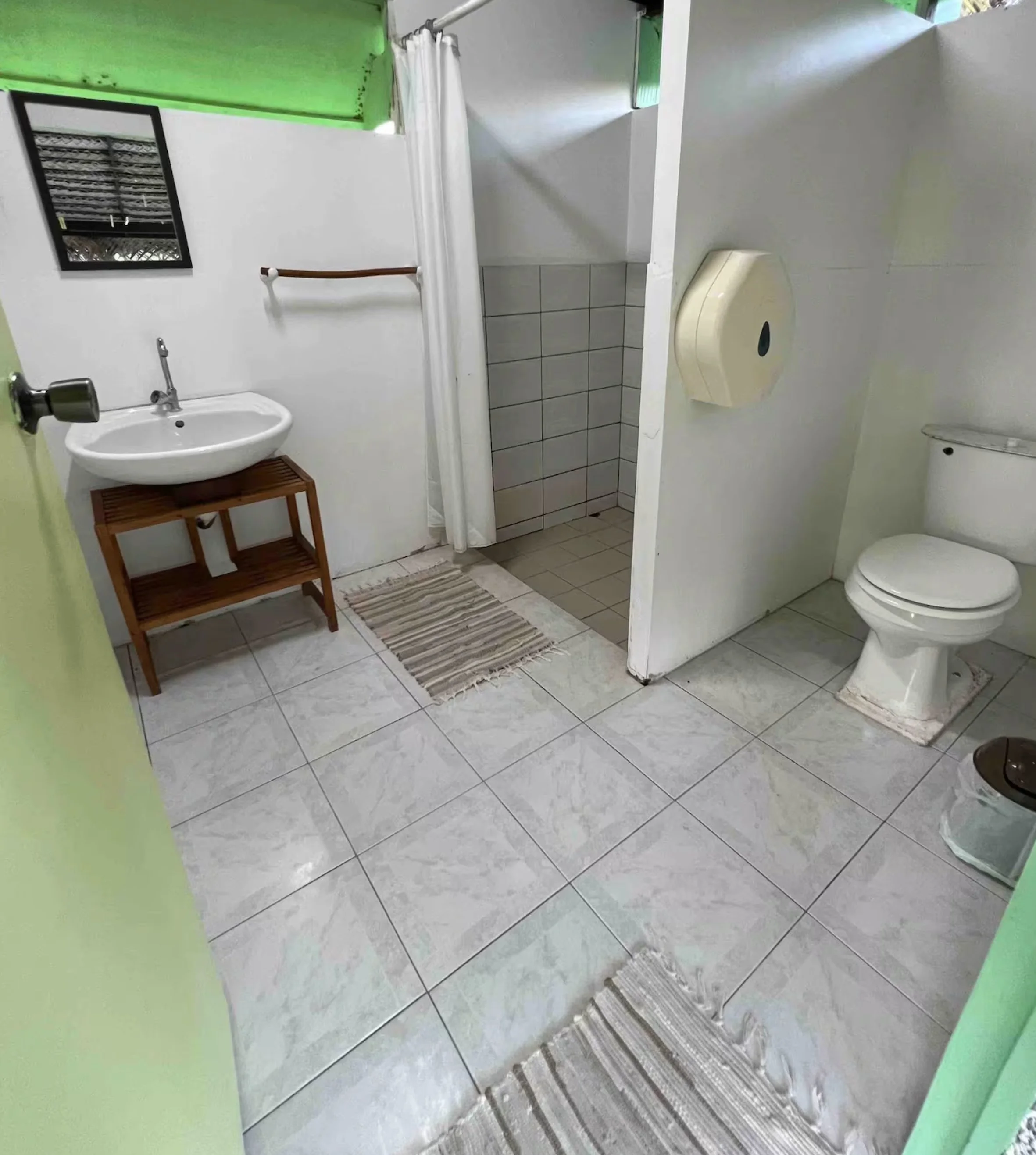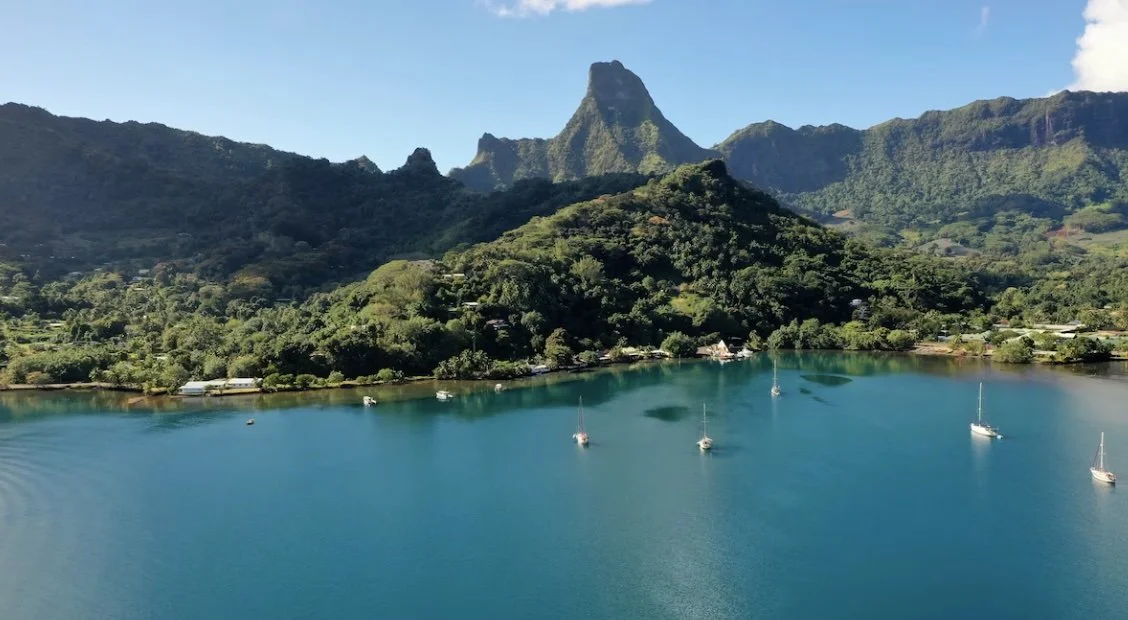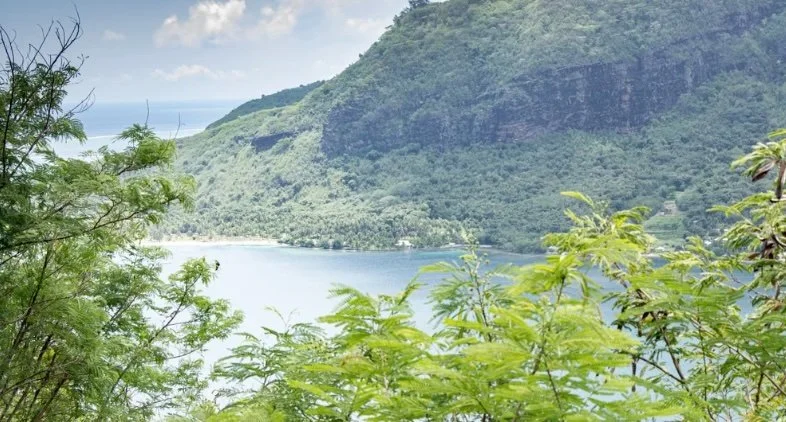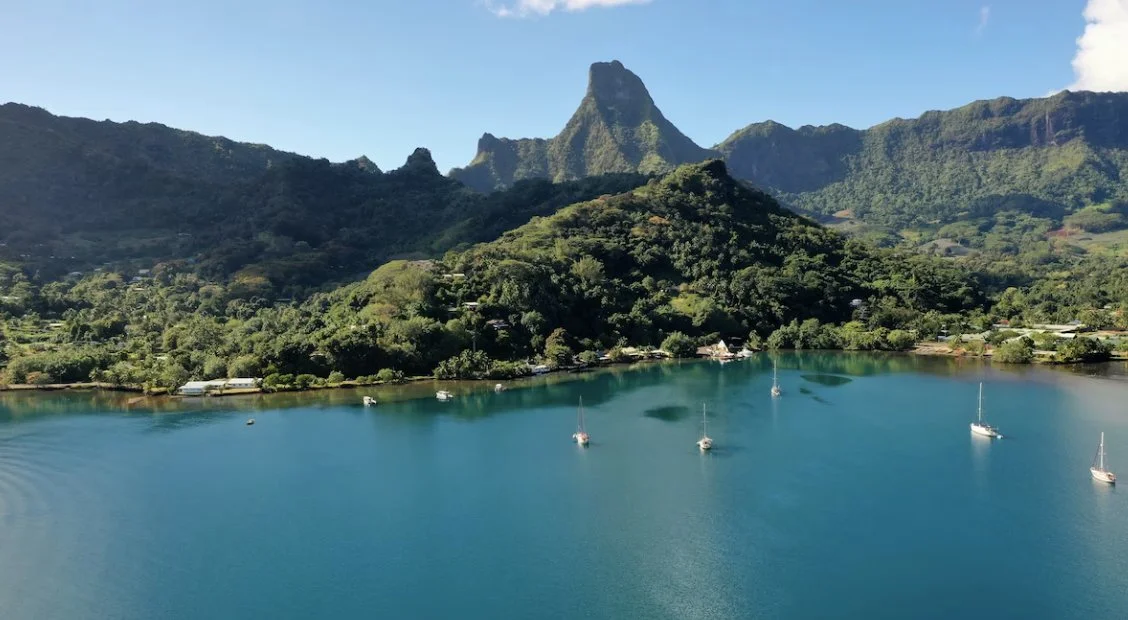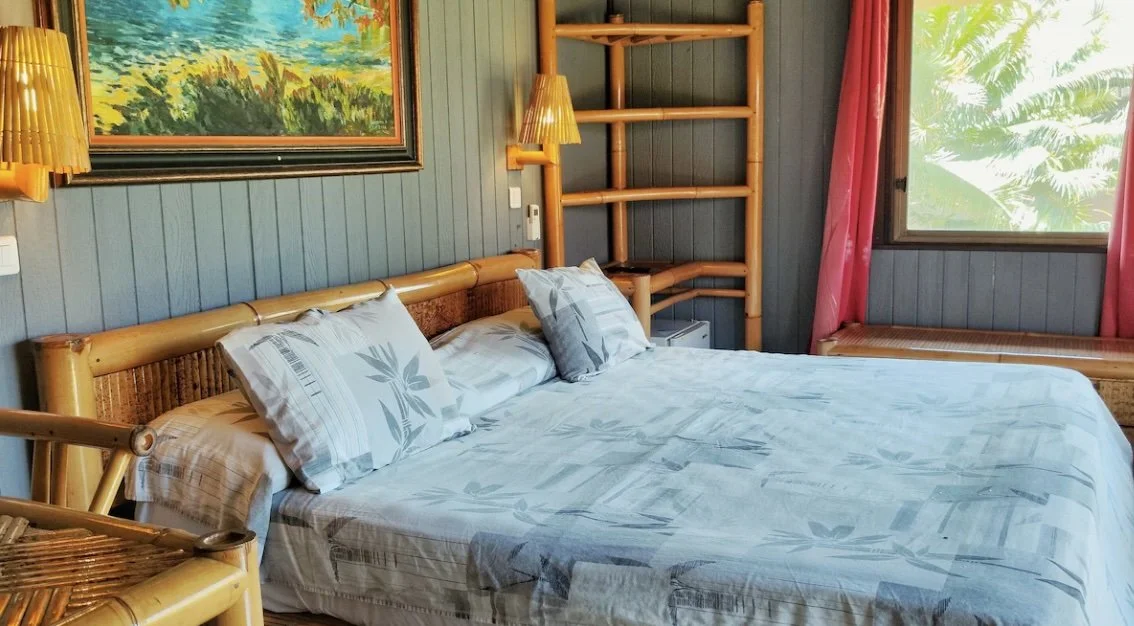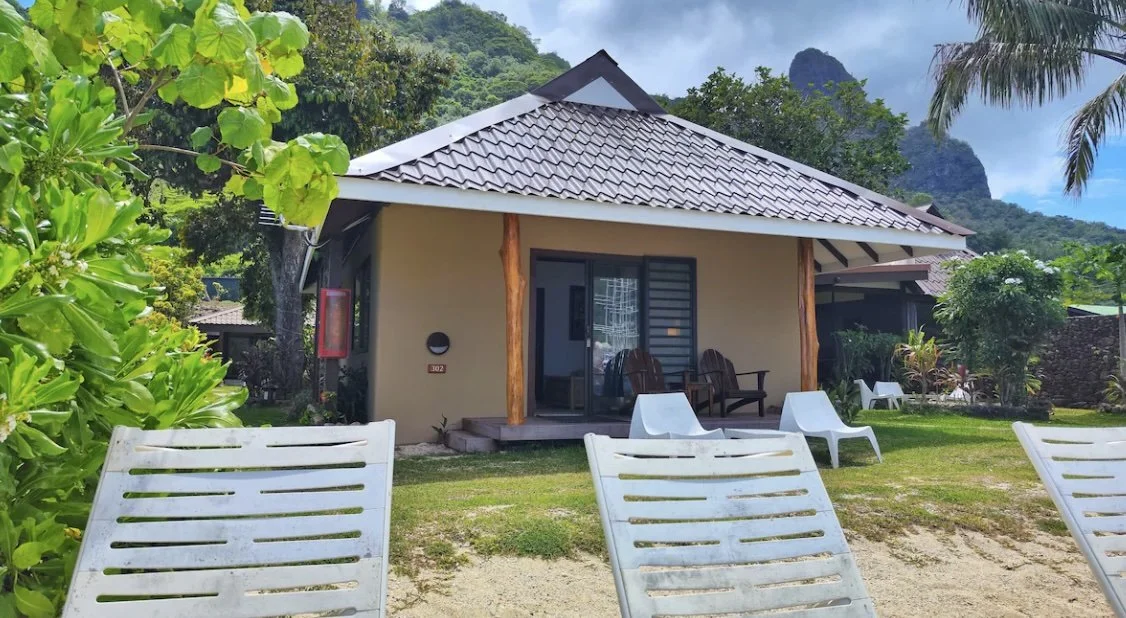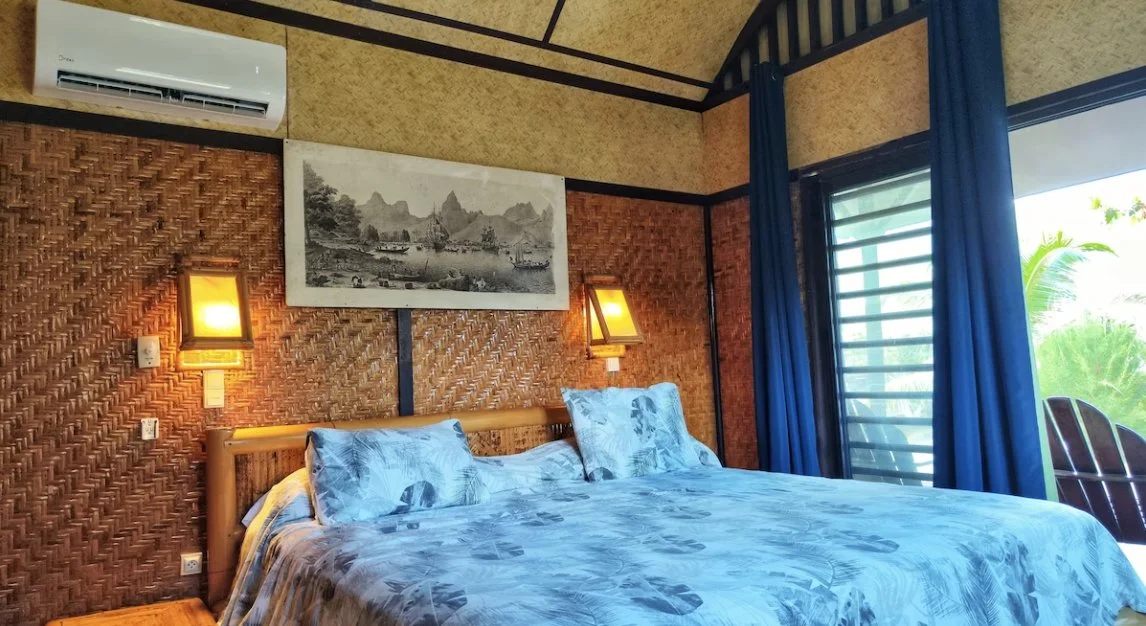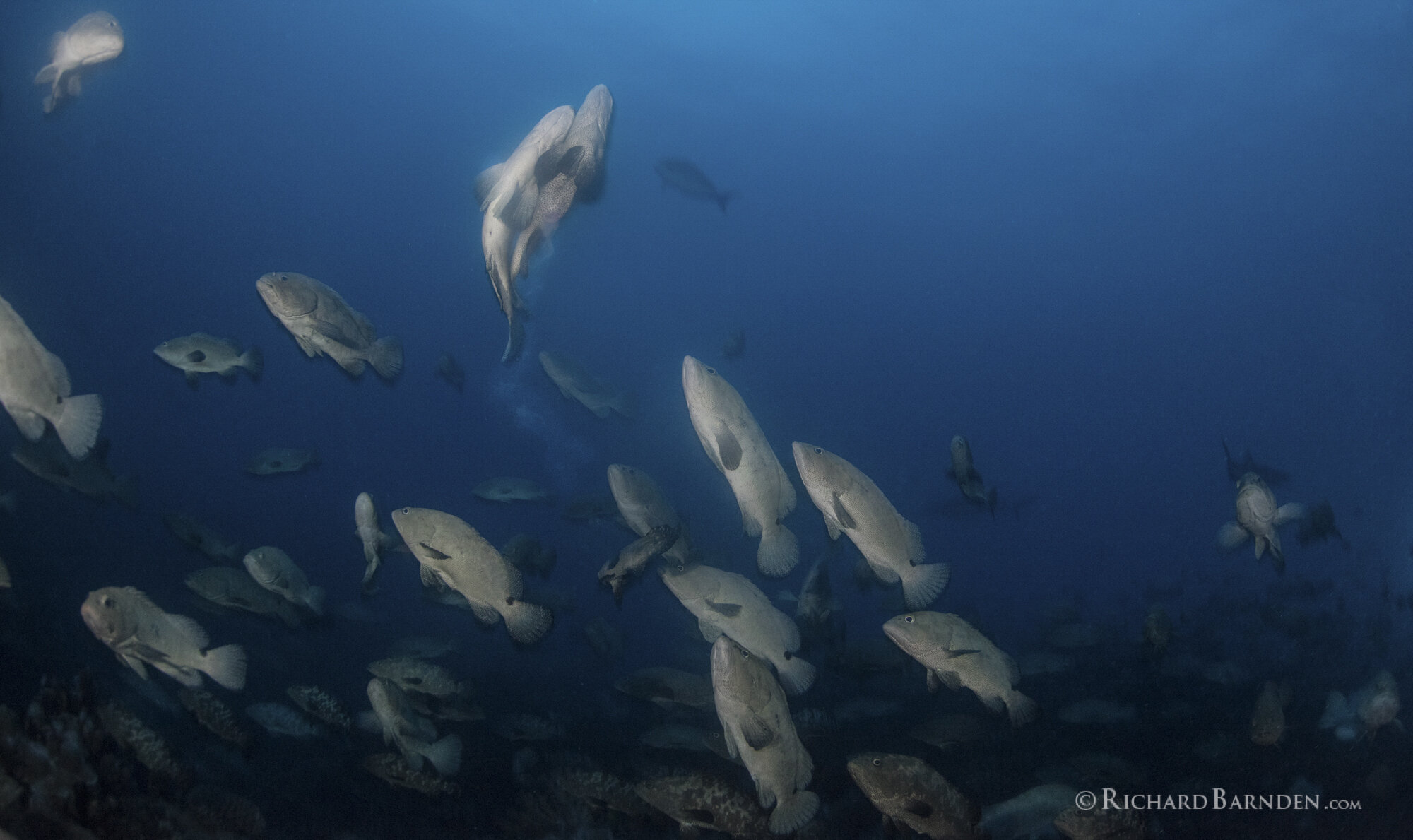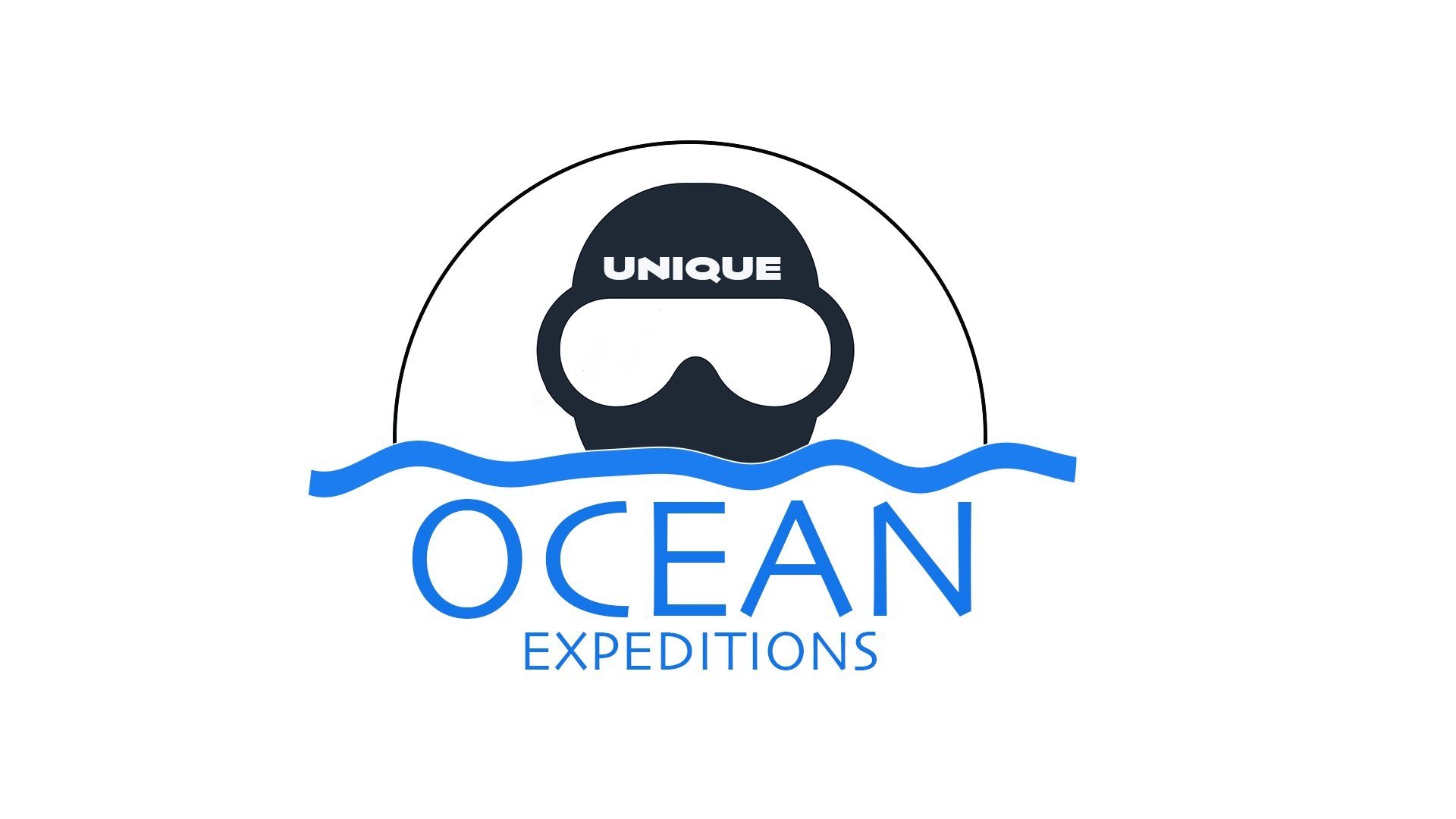FRENCH POLYNESIA
CAMOUFLAGE GROUPER SPAWNING
FAKARAVA ATOLL
THE EXPEDITION
The Tuamotu Archipelago or the Tuamotu Islands are a French Polynesian chain of just under 80 islands and atolls in the southern Pacific Ocean.
They constitute the largest chain of atolls in the world, extending (from northwest to southeast) over an area roughly the size of Western Europe.,their combined land area is 850 square kilometres. Divers come here to dive the famous WALL OF SHARKS where Laurent Ballesta and his Gombessa team documented the spawning and shark predation at night.
Join Unique Ocean Expeditions team as we continue to document the annual spawning of the camouflage grouper.
FAKARAVA ATOLL
Fakarava, Havaiki-te-araro, Havai'i or Farea is an atoll in the west of the Tuamotu group in French Polynesia. It is the second largest of the Tuamotu atolls. The nearest land is Toau, a coral atoll which lies 14 kilometres to the northwest.
The atoll is rectangular and its length is 60 kilometres, its width 21 kilometres. Fakarava has a wide and deep lagoon with a surface of 1,112 square kilometres with two passes. The main pass to enter the lagoon, located in its north-western end, is known as Passe Garuae and it is the largest pass in French Polynesia; the southern pass is called Tumakohua.
Fakarava has 837 inhabitants, mainly living in the main village called Rotoava, in the north.
PASSE GARUAE PASS (North Pass)
The Garuae Pass is the widest channel in French Polynesia and is located in the north of the atoll. Currents can be particularly strong, and the channel itself is usually only dived on a slack or incoming tide. Plenty of grey reef sharks patrol the giant entrance while thousands of fish are hiding in the channel dug outs.
Possible manta ray encounters can be seen further up the channel wall, as well as a healthy reef of beautiful hard corals and a number of pelagics - including huge numbers of grey reef sharks and plenty of dog tooth tuna.
TUMAKOHUA PASS (South Pass)
Tumakohua Pass located in the far south of the atoll, is an hour’s boat ride from Rotoava and is very different from Passe Garuae in the north.
Only 200-metres wide, this pass is far narrower with currents surprisingly calmer. On any given day, this site can provide some truly spectacular dives, particularly if you’re interested in sharks. The pass has several spots where divers can find shelter and watch as numerous sharks patrol through the pass. A cave cut into the side of the channel, known as Shark’s Hole or Shark Wall, is also home to tons of grey reef sharks.
Other than the WALL OF SHARKS, Tumakohua Pass is most famous for its annual camouflage grouper spawning event.
CAMOUFLAGE GROUPER AGGREGATION
Leading up to the full moon tens of thousands of Camouflage Groupers (Epinephelus polyphekadion) are gathering around French Polynesia’s channels preparing to spawn, especially that of Fakarava South Pass. This channel holds the record number of groupers documented at over 18,000 individuals.
We begin our expedition before the full moon diving some of the big name sites with currents in preparation for the main event. These dives are very early morning dives, as the sun rises, we will begin the dive to watch the spectacle that is about to unfold.
A huge aggregation of groupers will rise from their hiding places, to ensure the continuation of their species. Witnessing this natural behaviour--which only can be described as an underwater firework display of energy and excitement--also attracts the biggest predators in Fakarava south pass such as hundreds of grey reef sharks, silver tips, oceanic blacktips, lemon sharks and more.
AVAILABLE DATES
13 - 20 JUNE 2027
FAKARAVA GROUPER SPAWNING EXPEDITION ONLY
7 NIGHTS ACCOMMODATION, 6 DAYS DIVING - ALL FOOD INCLUSIVE - $3,699
13 - 24 JUNE 2027
FAKARAVA GROUPER SPAWNING EXPEDITION WITH MOOREA EXTENSION
11 NIGHTS ACCOMMODATION, 8 WATER DAYS - ALL FOOD INCLUSIVE - $5,699
2027 ITINERARY
7 NIGHTS / 8 DAYS / 6 WATER DAYS - $3,699
13th June - Day One - Domestic Flight to Fakarava Airport (FAV) - Tahiti Air (VT 557) from Papeete (PPT) @ 13.35pm, arrives in Fakarava (FAV) @ 15.50pm
14th June - Day Two - North Pass - We will dive the North Pass of Fakarava Atoll
15th June - Day Three - North Pass - We will dive the North Pass of Fakarava Atoll
16th June - Day Four - South Pass - We will dive the South Pass of Fakarava Atoll, looking for Camouflage Groupers
17th June - Day Five - South Pass - We will dive the South Pass of Fakarava Atoll, looking for Camouflage Groupers
18th June - Day Six - South Pass - We will dive the South Pass of Fakarava Atoll, looking for Camouflage Groupers
19th June - Day Seven - South Pass - We will dive the South Pass of Fakarava Atoll, looking for Camouflage Groupers
20th June - Day Eight - Depart - Domestic Flight to Papeete Airport (FAV) - Tahiti Air (VT557) from Fakarava Airport (FAV) @ 16.40pm, arrives in Papeete (PPT) @ 17.55pm
ADD ON ITINERARY
4 EXTRA NIGHTS / 3 EXTRA DAYS / 2 EXTRA WATER DAYS / SNORKEL ONLY - $1,999 EXTRA
20th June - Day Eight - Sat Overnight in Papeete
21st June - Day Nine - Snorkel/Dive - Papeete Island
22nd June - Day Ten - Travel Day - Travel To Moorea Island with Ferry
23rd June - Day Eleven - Snorkel/Dive - Moorea Island
24th June - Day Twelve - Depart - Ferry back to Papeete (PPT) and onto Airport
AVAILABLE DATES
19 - 26 JUNE 2028
FAKARAVA GROUPER SPAWNING EXPEDITION ONLY
7 NIGHTS ACCOMMODATION, 6 DAYS DIVING - ALL MEALS INCLUSIVE - $3,899
19 - 30 JUNE 2028
FAKARAVA GROUPER SPAWNING EXPEDITION WITH MOOREA EXTENSION
11 NIGHTS ACCOMMODATION, 8 WATER DAYS - ALL FOOD INCLUSIVE - $5,899
2028 ITINERARY
7 NIGHTS / 8 DAYS / 6 WATER DAYS - $3,899
19th June - Day One - Domestic Flight to Fakarava Airport (FAV) - Tahiti Air (VT 557) from Papeete (PPT) @ 13.35pm, arrives in Fakarava (FAV) @ 15.50pm
20th June - Day Two - North Pass - We will dive the North Pass of Fakarava Atoll
21st June - Day Three - North Pass - We will dive the North Pass of Fakarava Atoll
22nd June - Day Four - South Pass - We will dive the South Pass of Fakarava Atoll, looking for Camouflage Groupers & Night Dive
23rd June - Day Five - South Pass - We will dive the South Pass of Fakarava Atoll, looking for Camouflage Groupers & Night Dive
24th June - Day Six - South Pass - We will dive the South Pass of Fakarava Atoll, looking for Camouflage Groupers
25th June - Day Seven - South Pass - We will dive the South Pass of Fakarava Atoll, looking for Camouflage Groupers
26th June - Day Eight - Depart - Domestic Flight to Papeete Airport (FAV) - Tahiti Air (VT557) from Fakarava Airport (FAV) @ 16.40pm, arrives in Papeete (PPT) @ 17.55pm
ADD ON ITINERARY
4 EXTRA NIGHTS / 4 EXTRA DAYS / 2 EXTRA WATER DAYS / SNORKEL ONLY - $1,999 EXTRA
26th June - Day Eight - Sat Overnight in Papeete
27th June - Day Nine - Snorkel/Dive - Papeete Island
28th June - Day Ten - Travel Day - Travel To Moorea Island with Ferry
29th June - Day Eleven - Snorkel/Dive - Moorea Island
30th June - Day Twelve - Depart - Ferry back to Papeete (PPT) and onto Airport
FAKARAVA ACCOMMODATION
NORTH PASS
BASIC SHARED/COUPLES CHALETS
FAKARAVA ACCOMMODATION
NORTH PASS
BASIC SINGLE CHALETS
FAKARAVA ATOLL LOCATION
MOOREA ACCOMMODATION
MOOREA ISLAND
BASIC SHARED/COUPLES CHALETS
INCLUDES
6 days of Diving
7 Nights Basic Accommodation in Fakarava North
Breakfast
Lunch
Tanks & Weights
EXCLUDES
International Flight to Papeete
Domestic Flight to Fakarava
Gratuities
Rental Dive Equipment
Dinners
DIVE SITE INFORMATION
WATER TEMPERATURE - 26c / 73F
WETSUIT - 5mm / 3mm
Fakarava
Located southeast of Rangiroa, Fakarava is home to the second largest lagoon in the Tuamotu Atolls. This rectangular reef encloses such a rich ecosystem that it has been designated by UNESCO as a Biosphere Reserve. The area both inside and around Fakarava is known to safeguard a variety of endemic wildlife. In fact, out of the entire commune including small atolls such as Niau, Raraka, Taiaro and Toau, some are completely closed to the ocean, creating a nursery for precious underwater flora and fauna.
Fakarava South Pass - One of French Polynesia’s most famous dives, and probably the sharkiest dive on the planet. It’s all about diving the passes in French Polynesia and generally done on an incoming tide. On most dives you will start in the mouth of the pass spending time watching the wall of sharks 200+ and let the current drift you inside as you pass by the marine life. Divers are dazzled by the incredible variety of fish, including barracudas, jacks, Napoleon wrasses and schooling grey reef sharks. Strong tidal currents render it a dive for the more experienced.
Fakarava North Pass - The only other pass in Fakarava and normally has strong currents. This pass is much wider than the south pass and currents here can be wild. Schooling yellow snappers are hiding in the large holes which make a great place to hide and let the sharks and fish come to you. Silvertip’s, hammerheads and eagle rays are common visitors.
SPAWNING DIVE INFORMATION
POTENTIAL CURRENT DIVES
The yearly aggregation of camouflage grouper (Epinephelus polyphekadion) has been known for many decades in the South Pacific. Scientists have come and gone since the late 70’s observing their patterns and protecting them and their vulnerable spawning sites around the islands during the months of June through to August.
WORKSHOP SKILLS
RICHARD BARNDEN will be leading this expedition and sharing his knowledge and skills of shooting spawning groupers at night and grey reef shark at night. Each evening Richard will give in depth presentations about the following days diving along with photography tips on settings and compositions.
SKILLS EXPLORED
Equipment and Photographic Gears
Night Diving Environments
Photographing Sharks
Lighting - Ambient Light
Lighting - Strobes vs Continues light
Settings and Compositions
